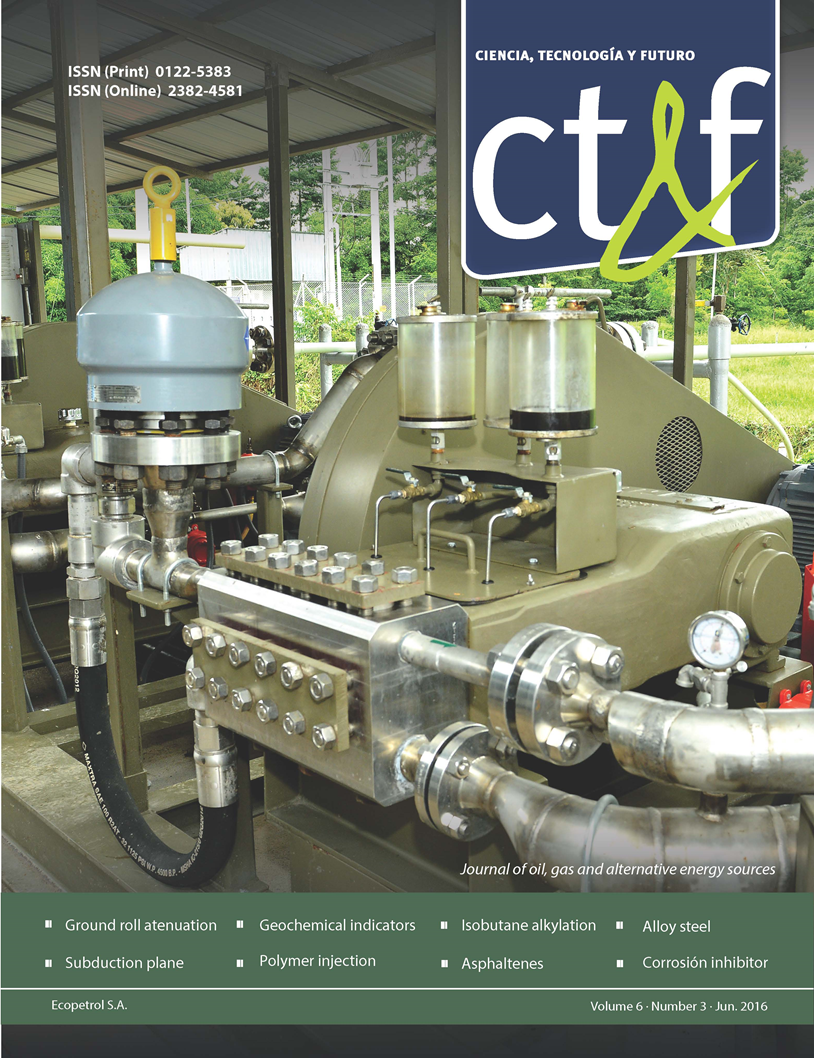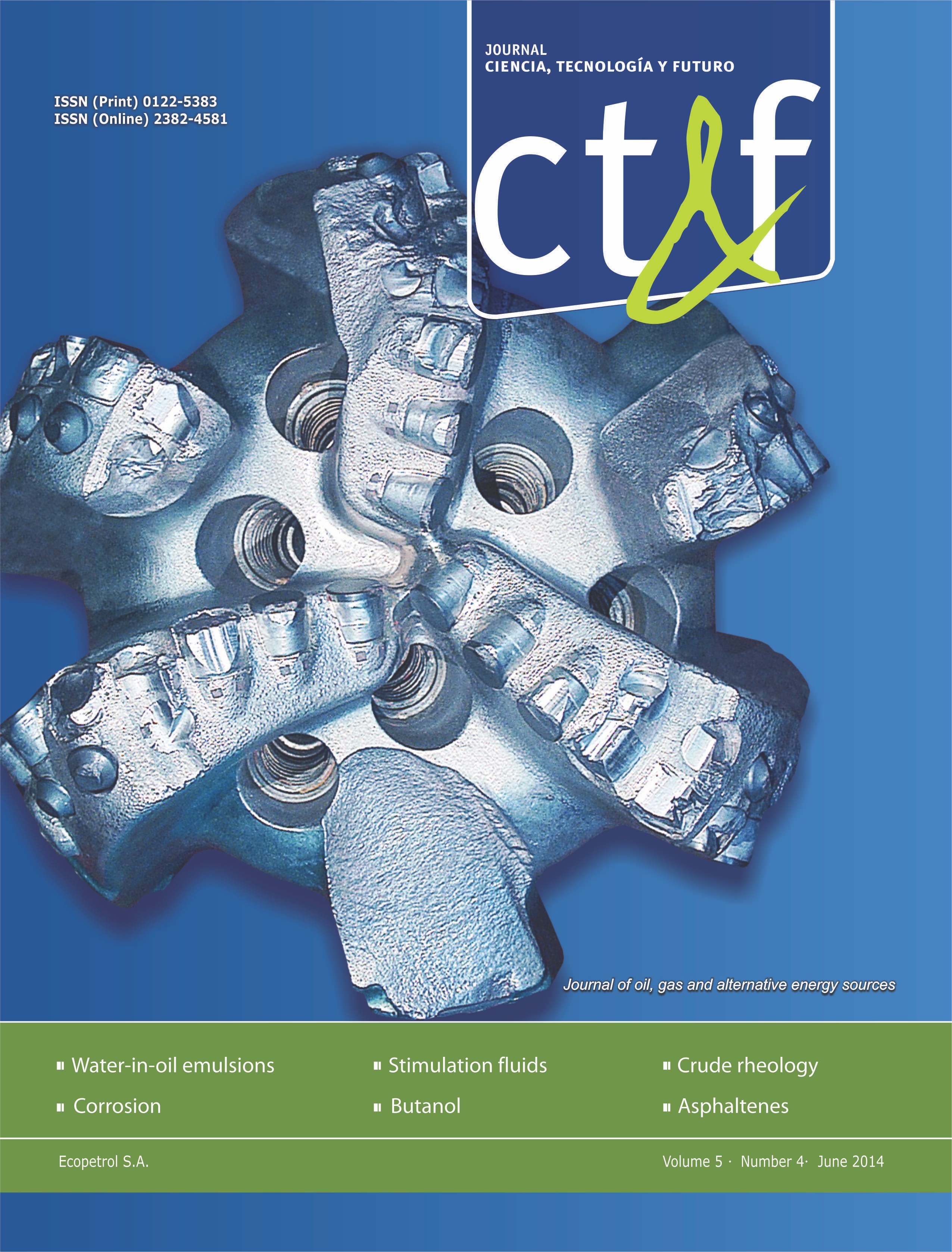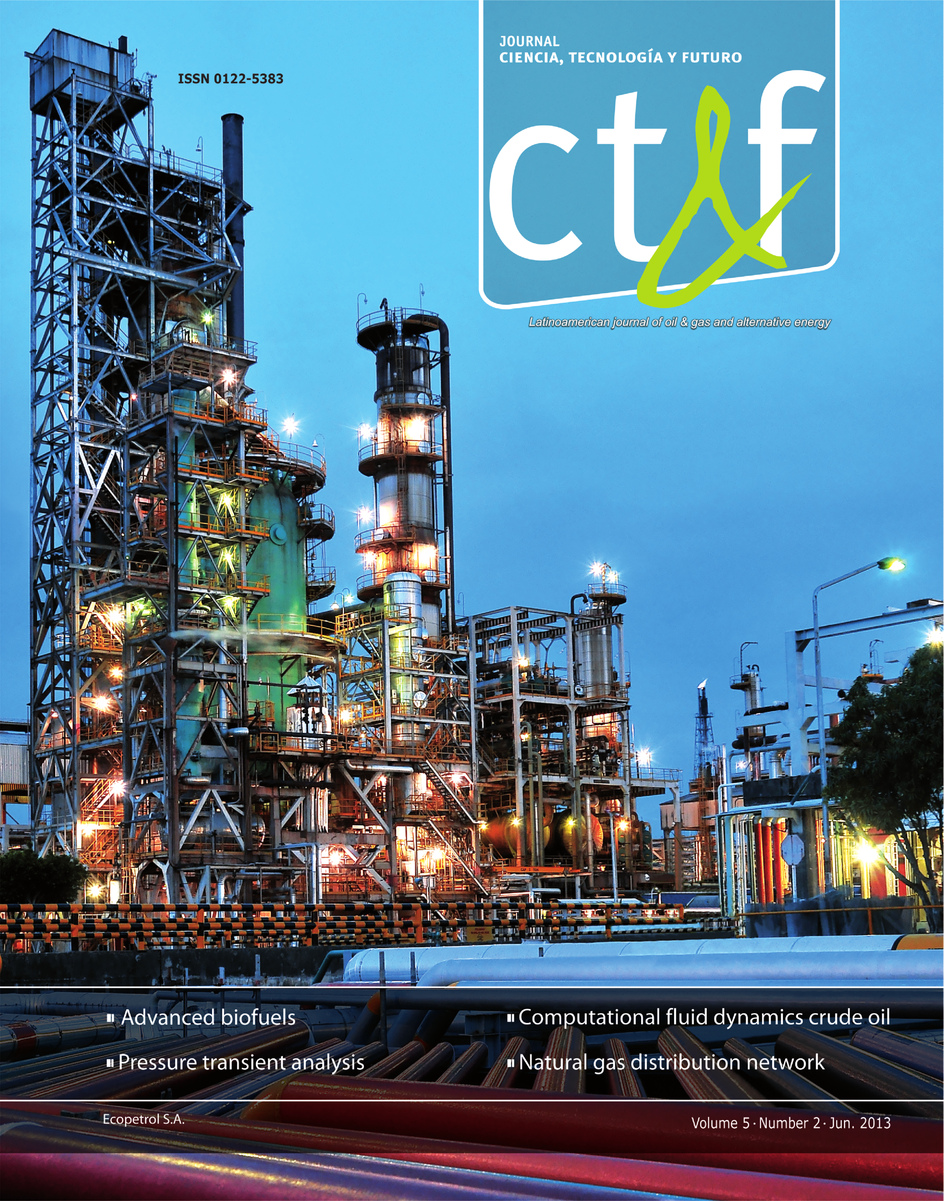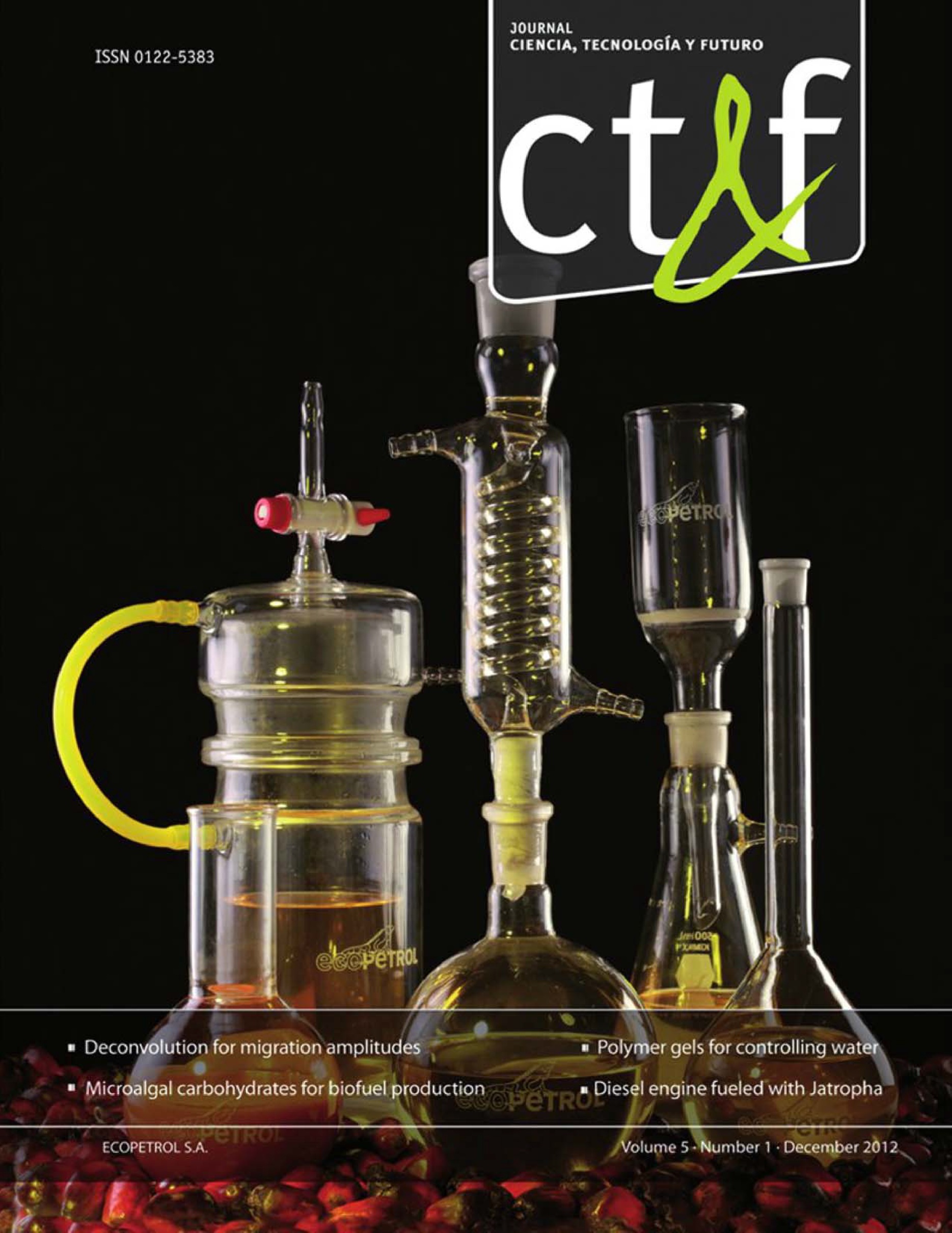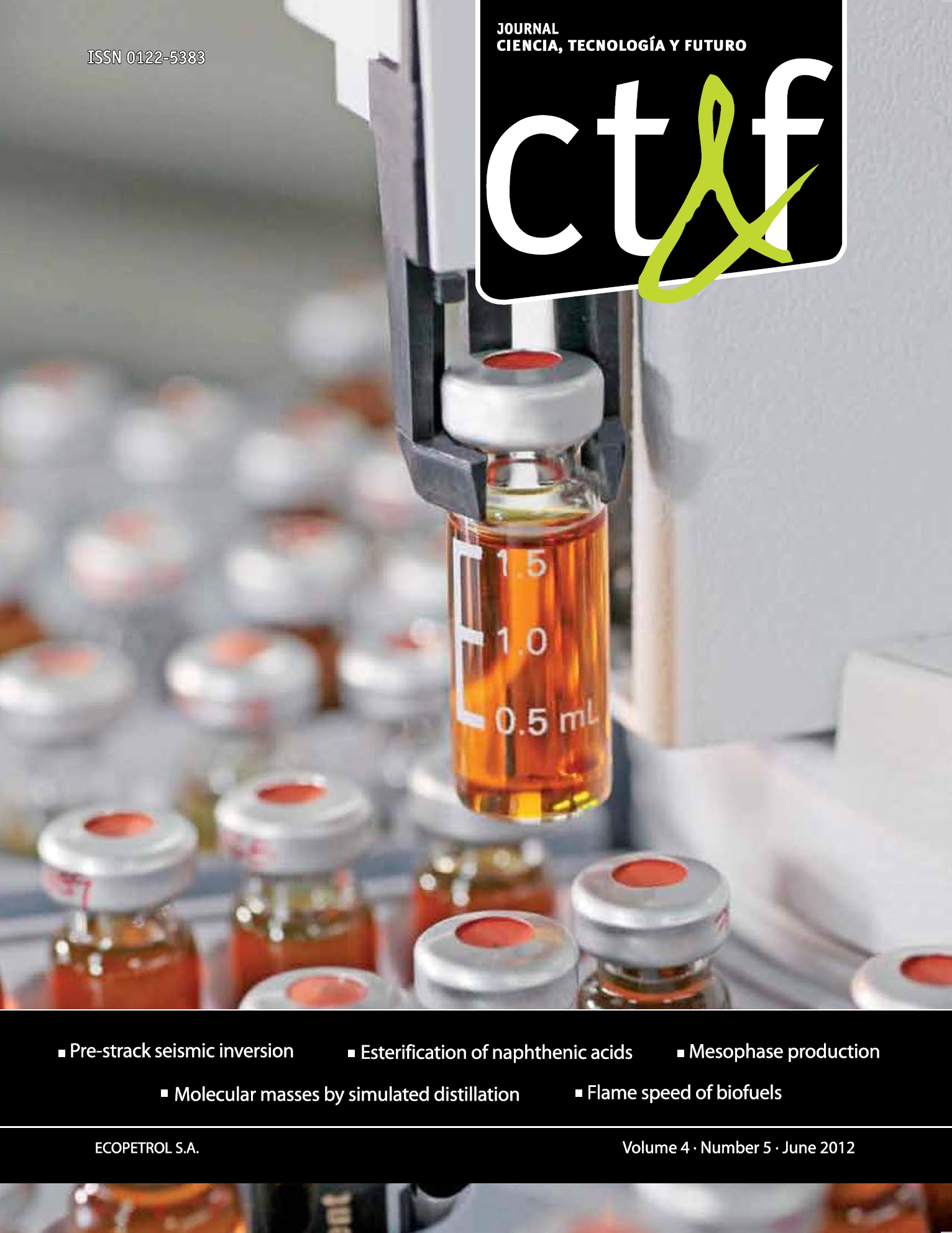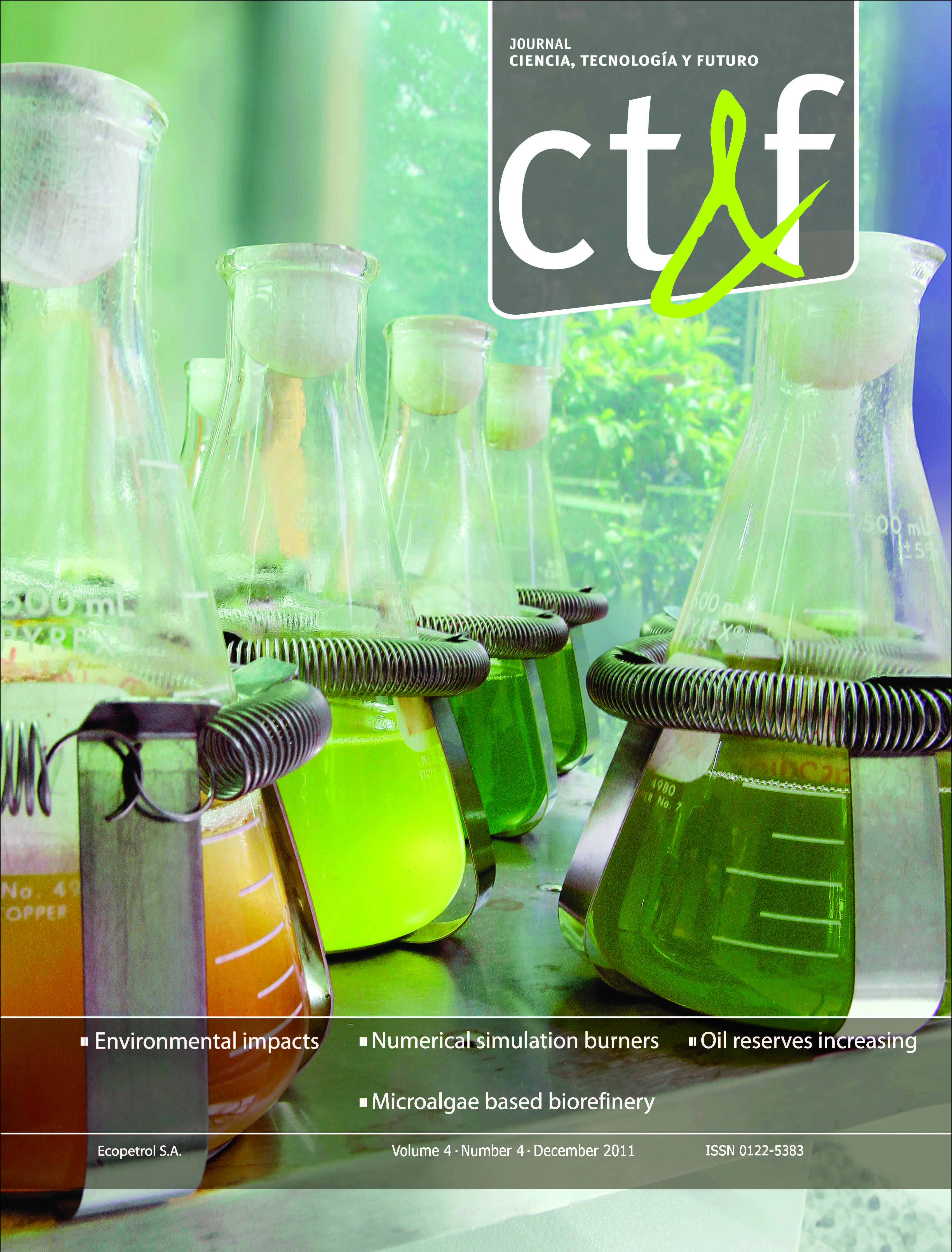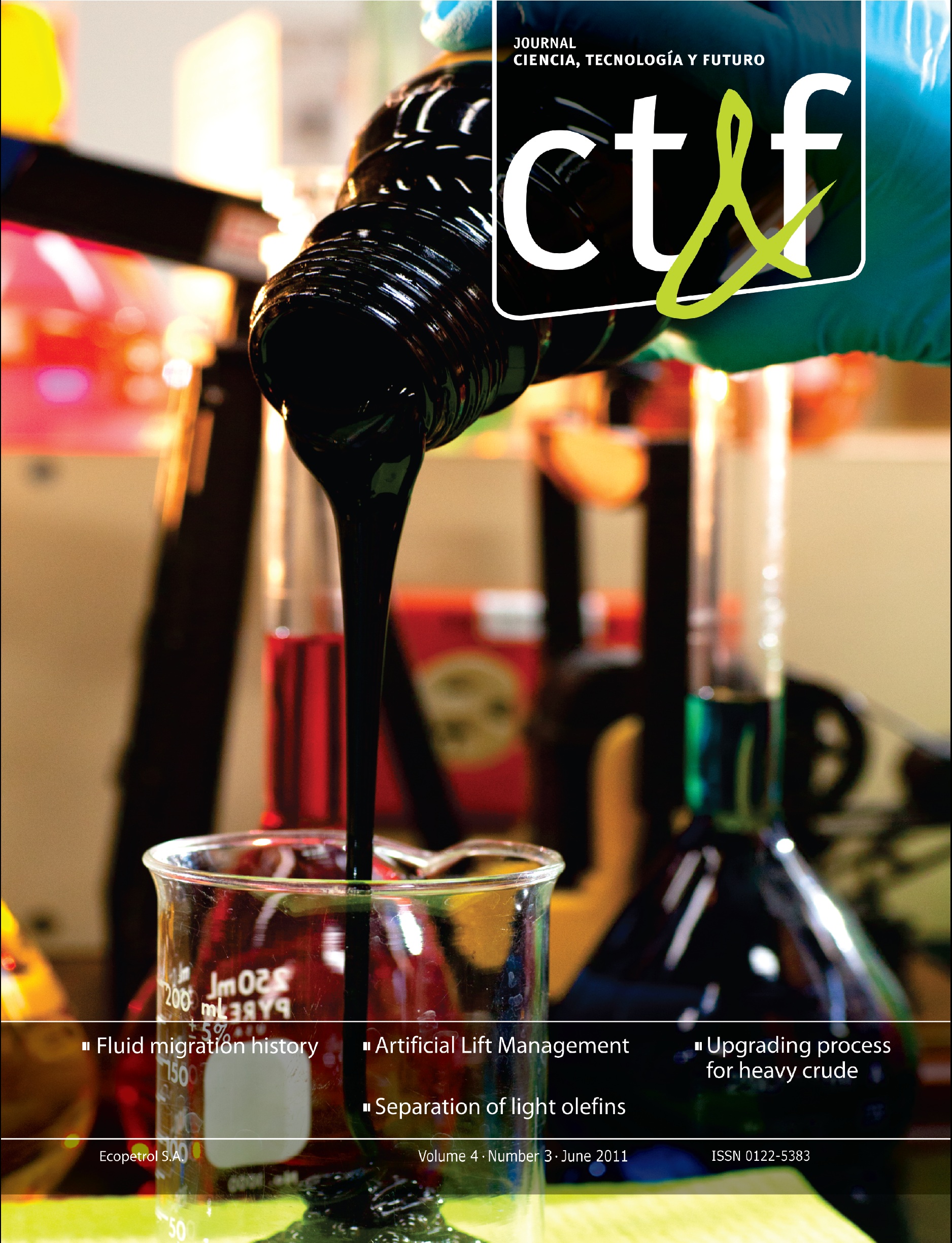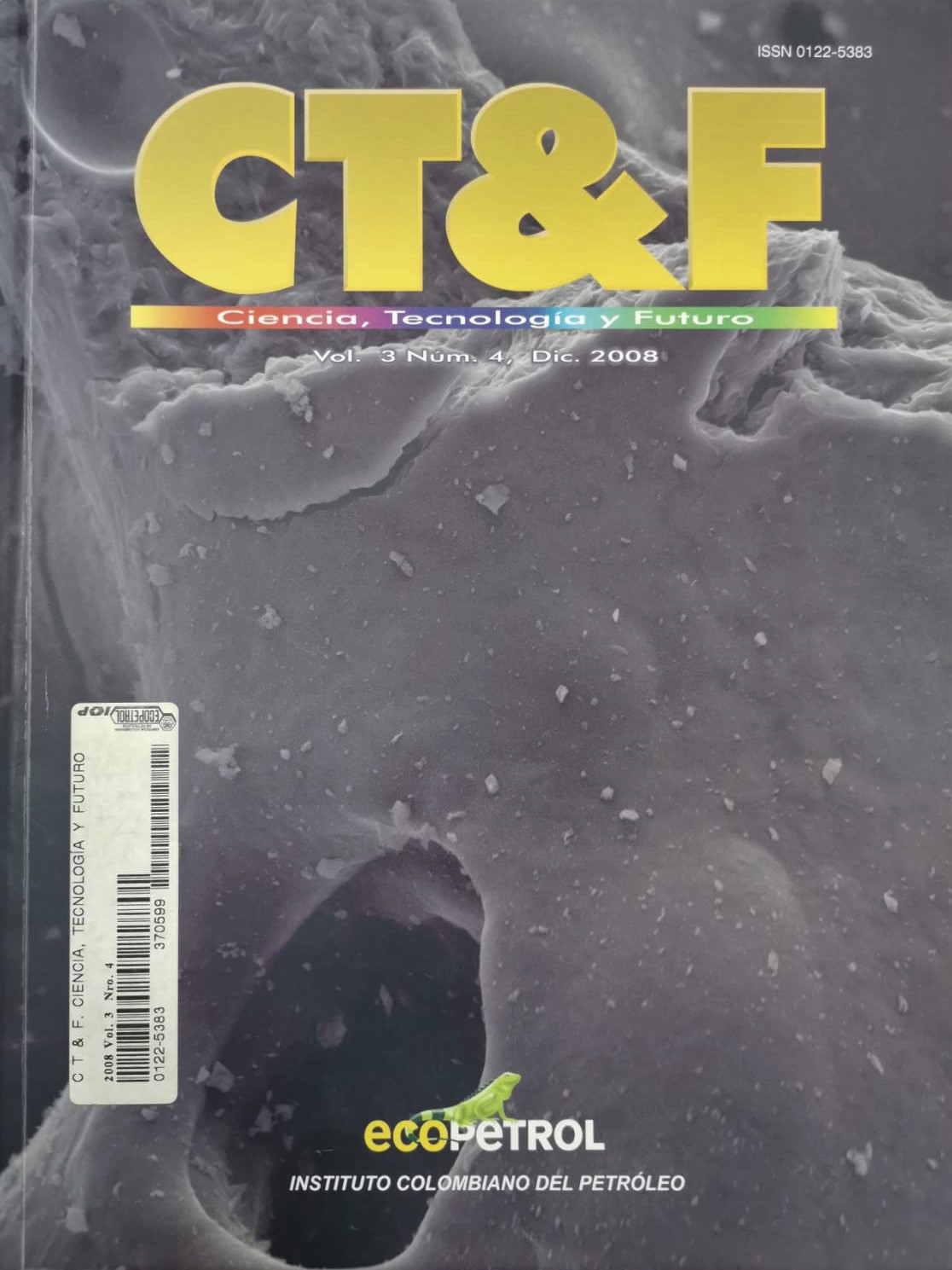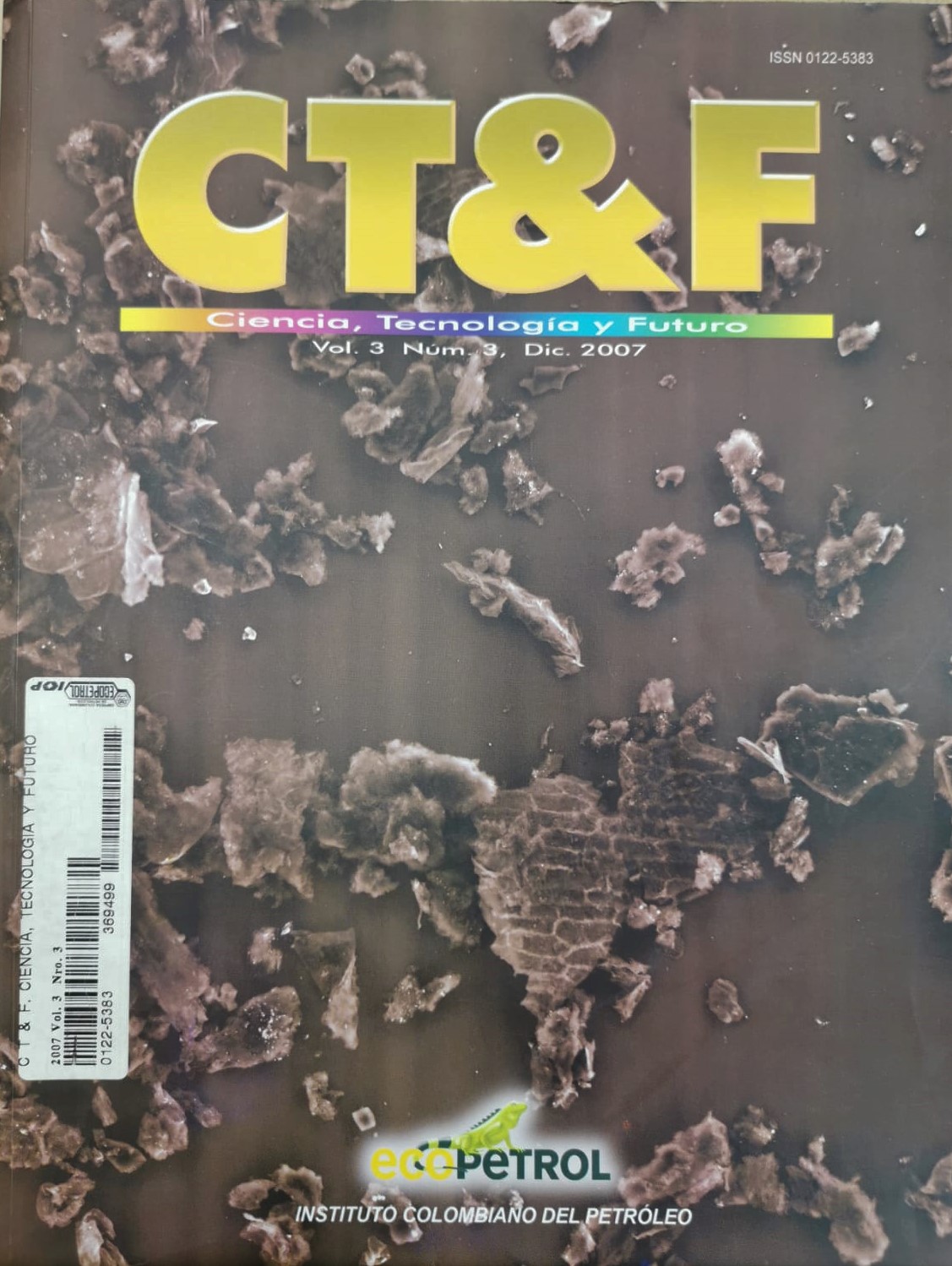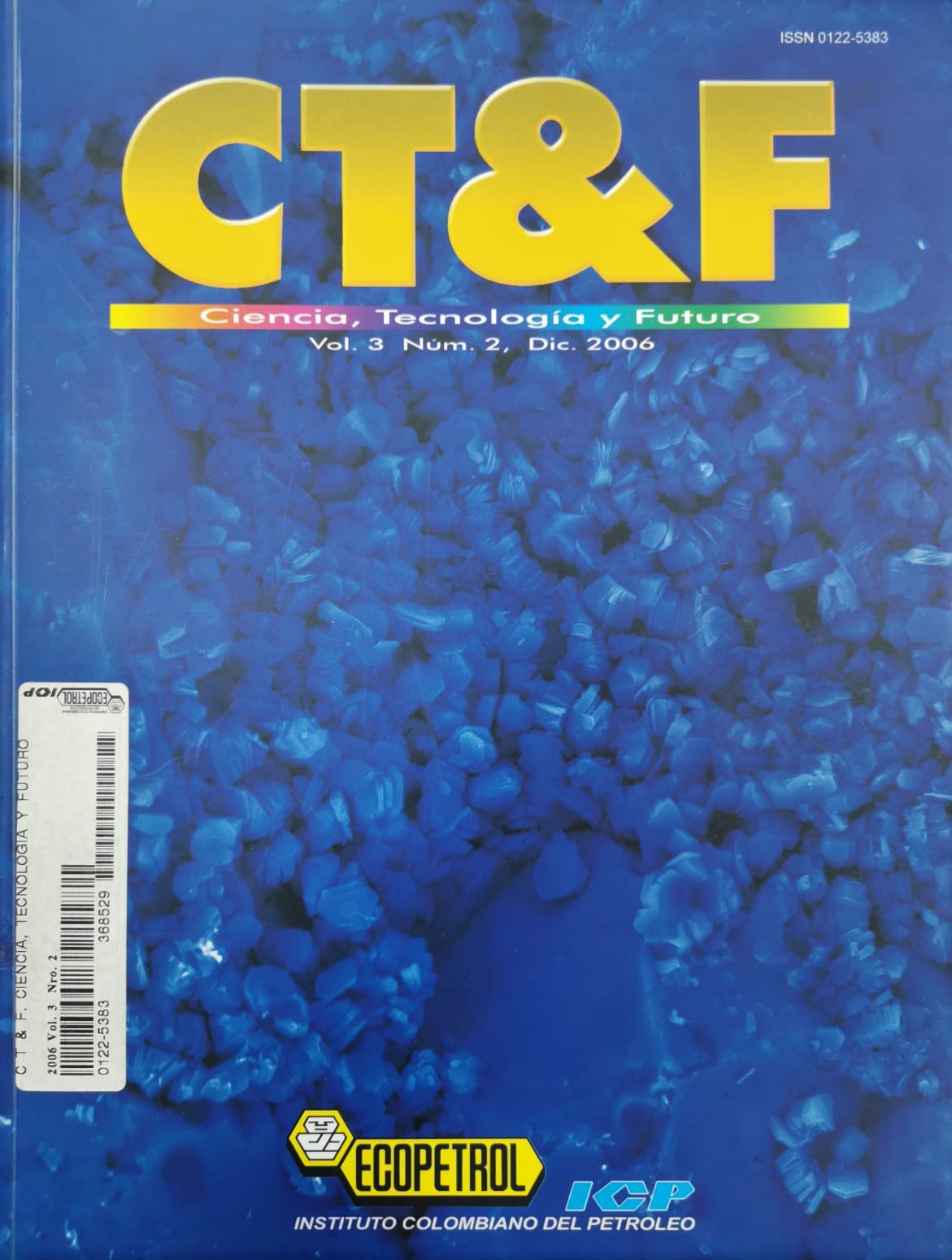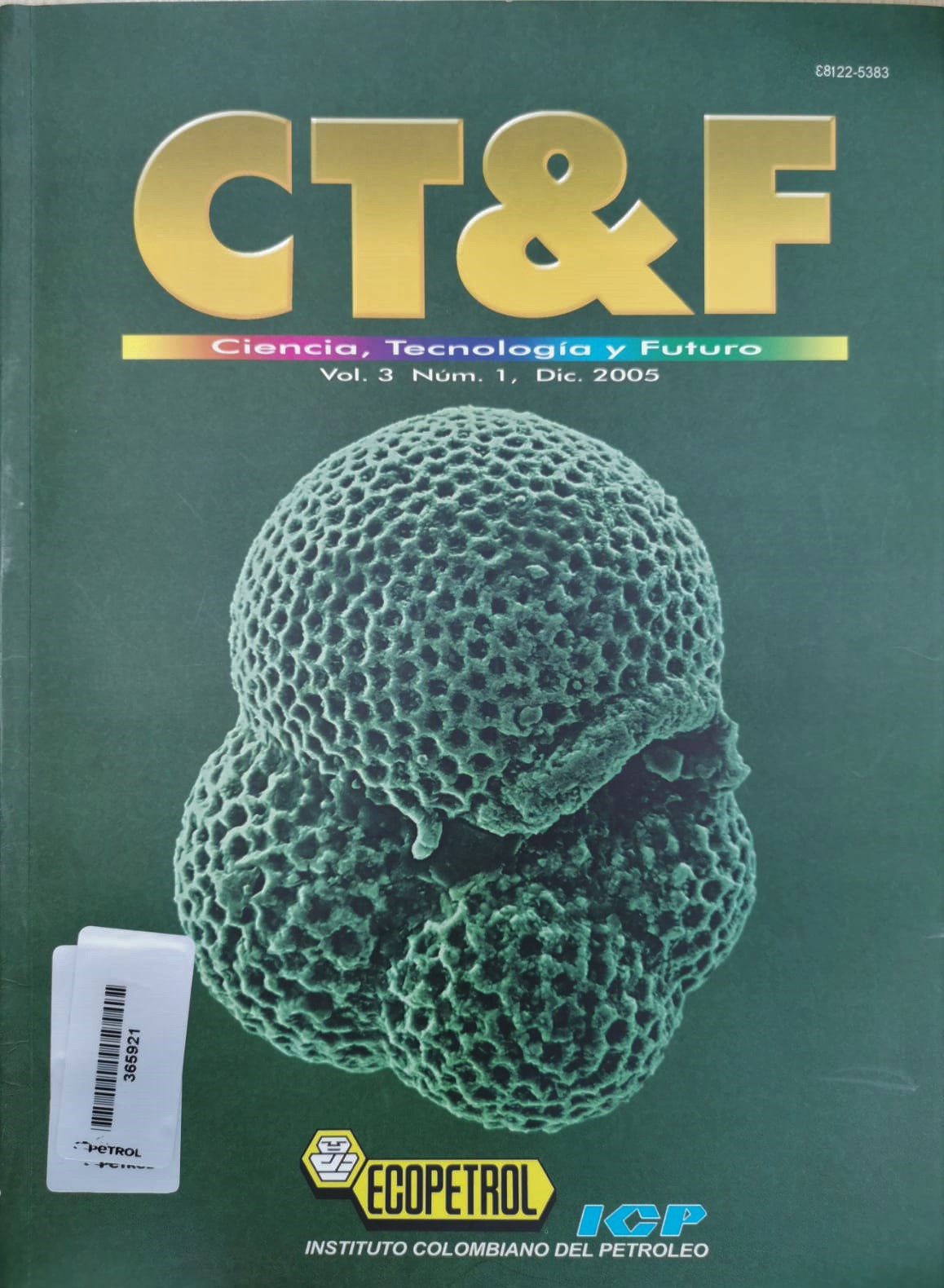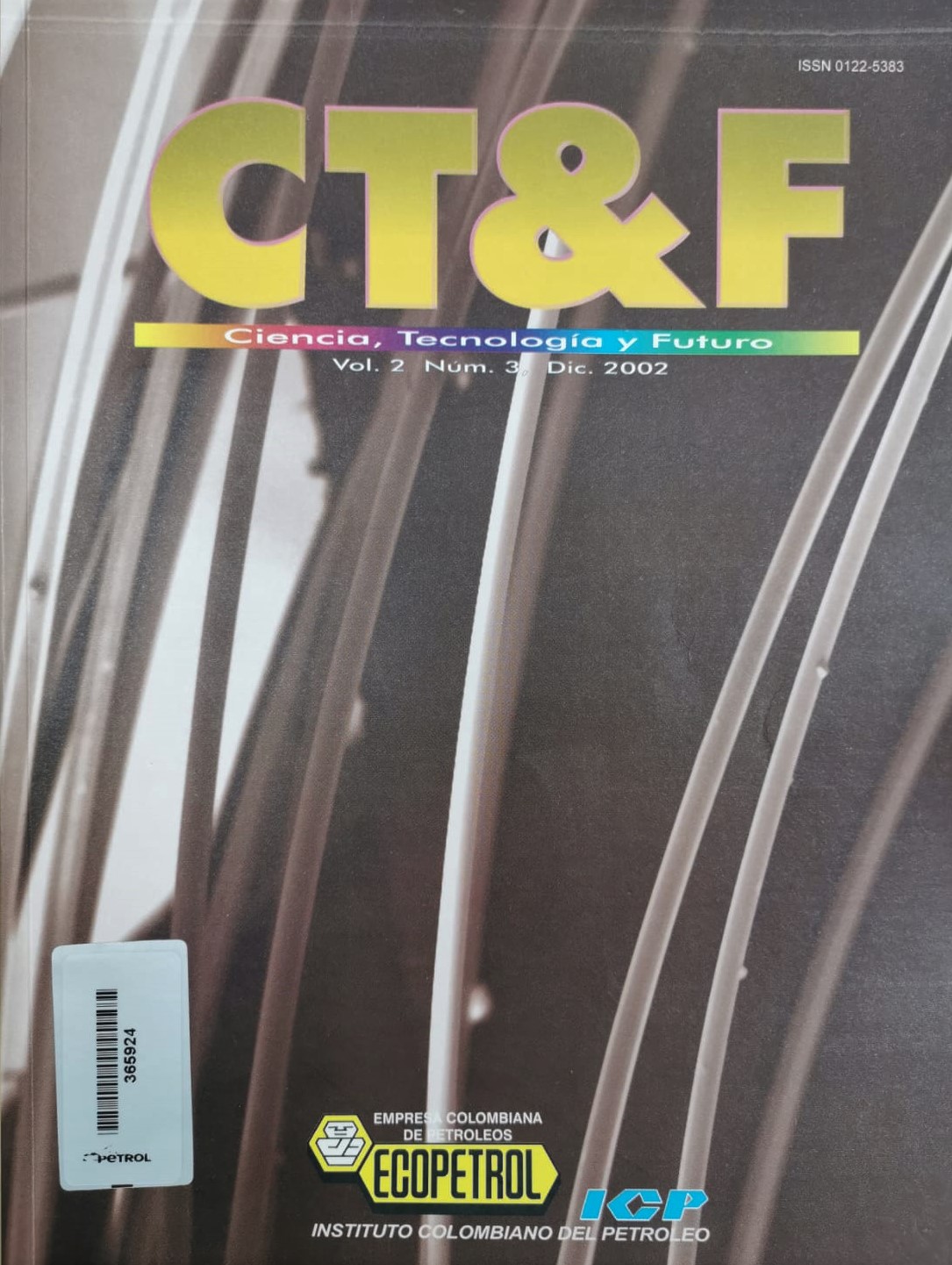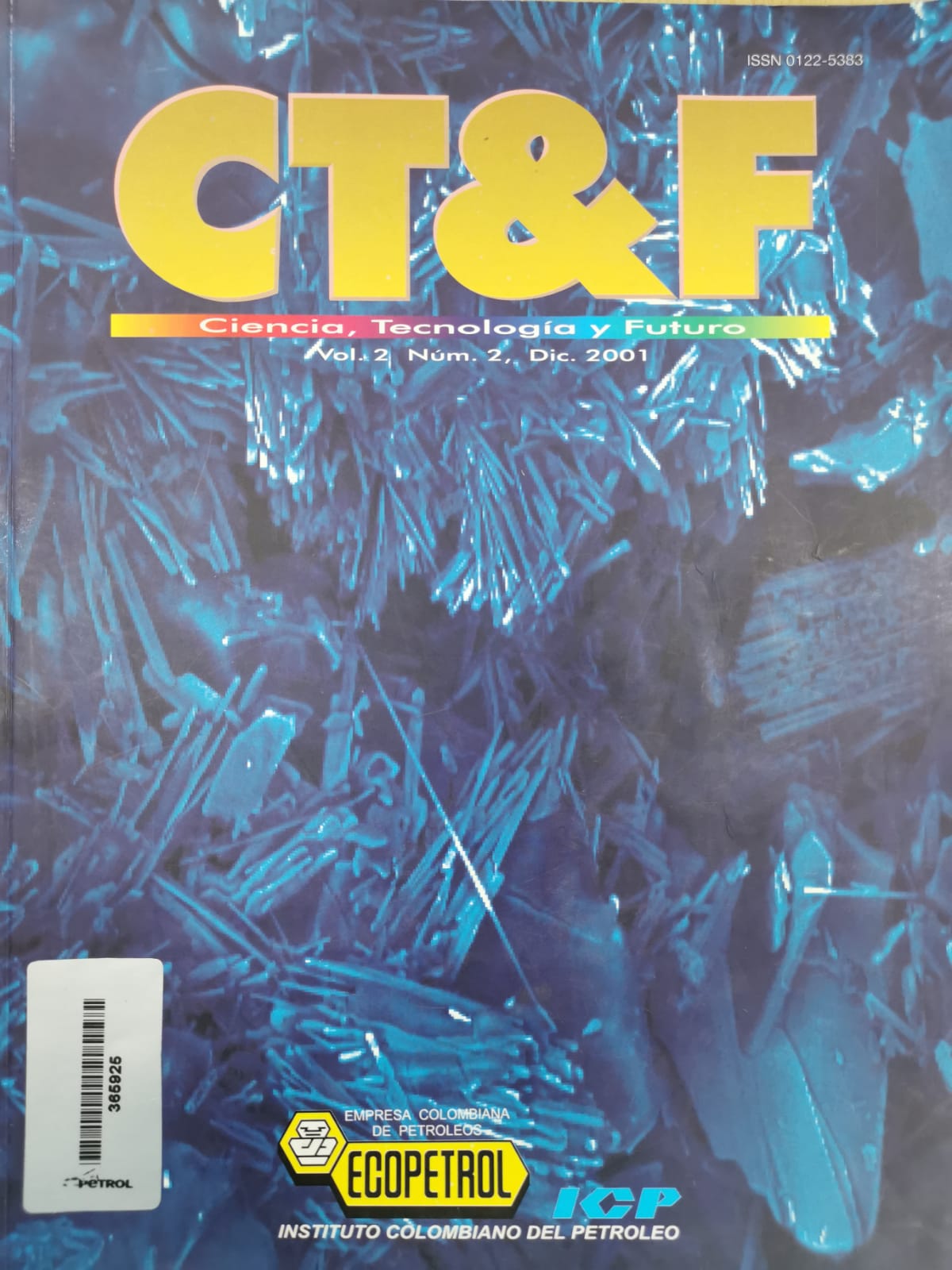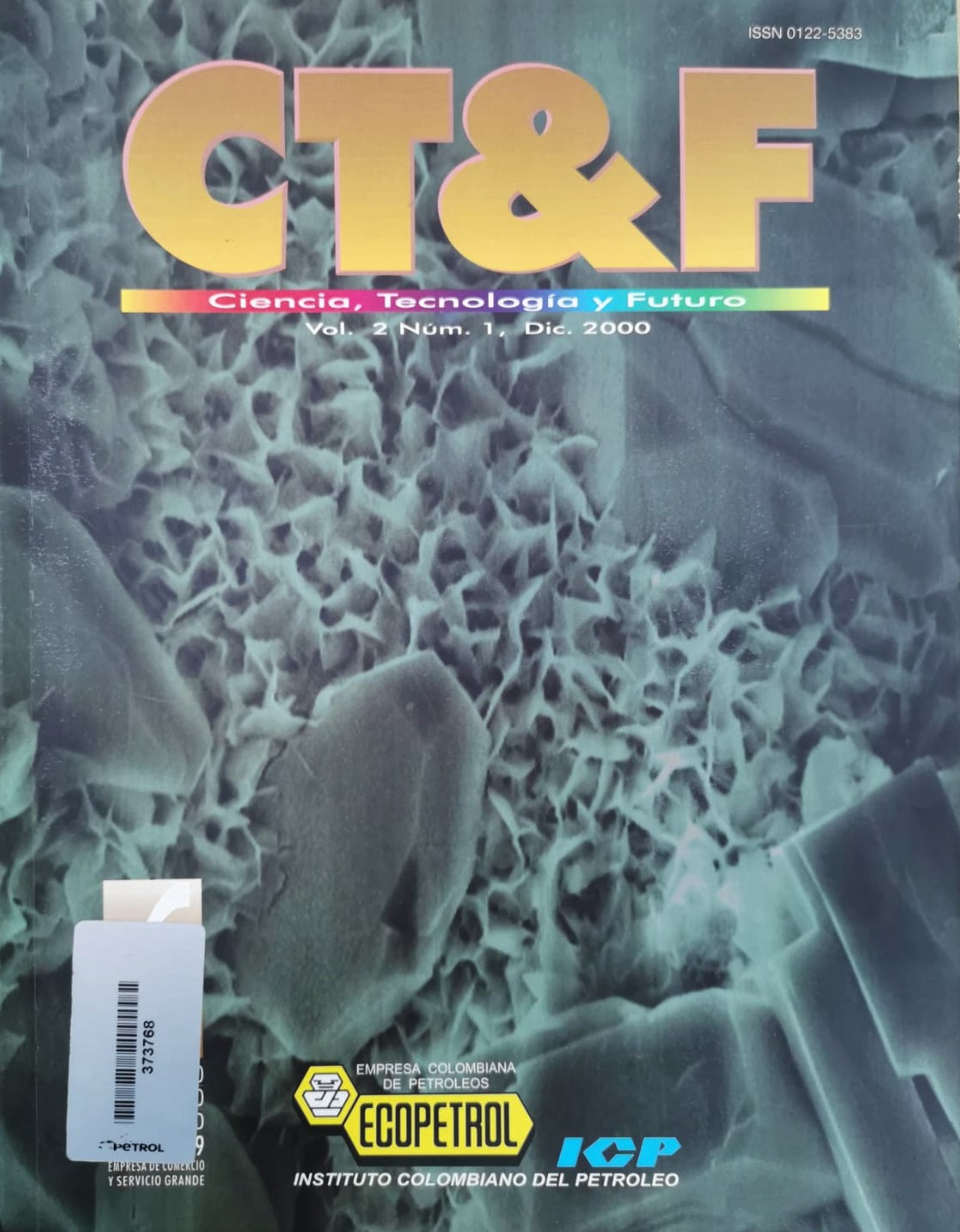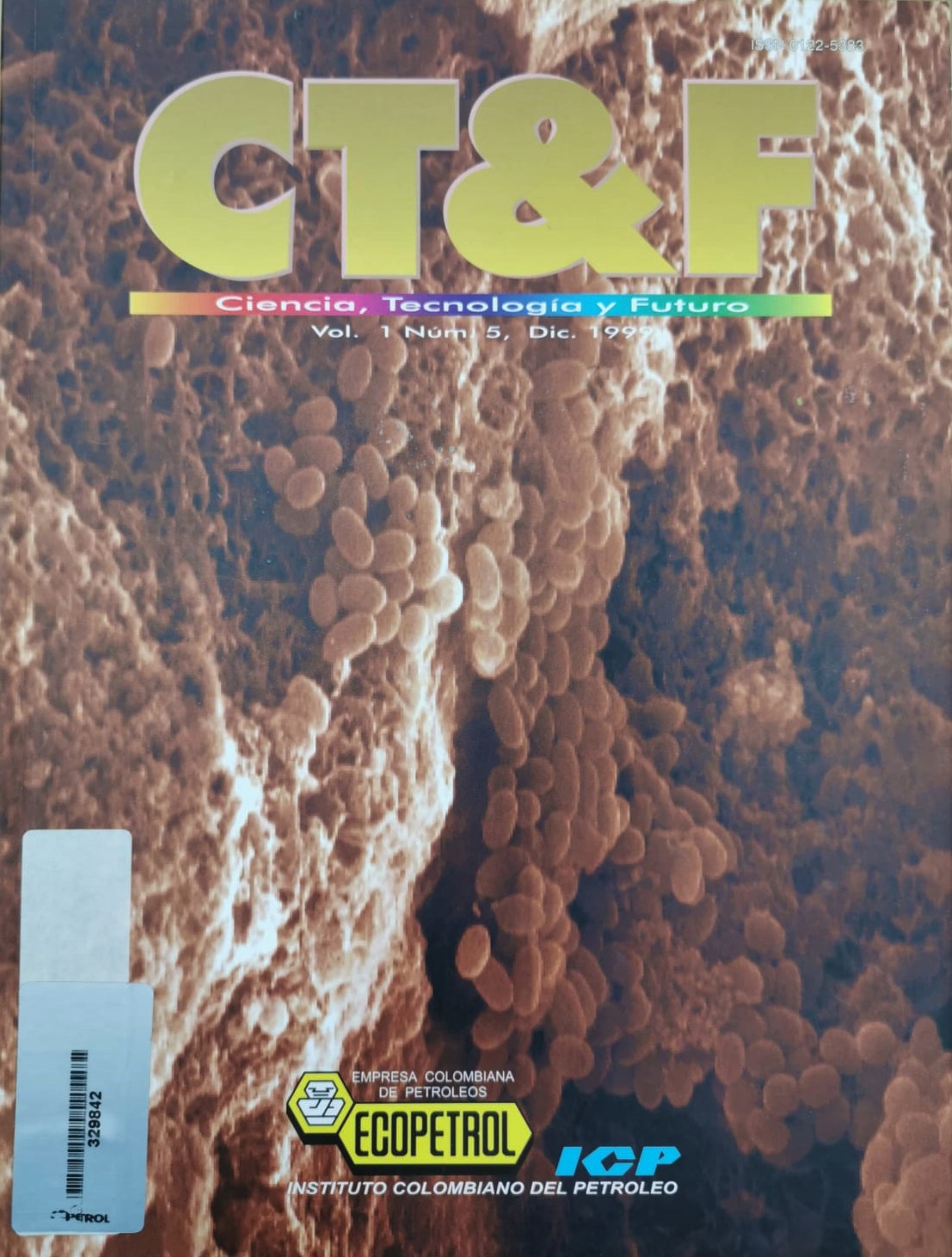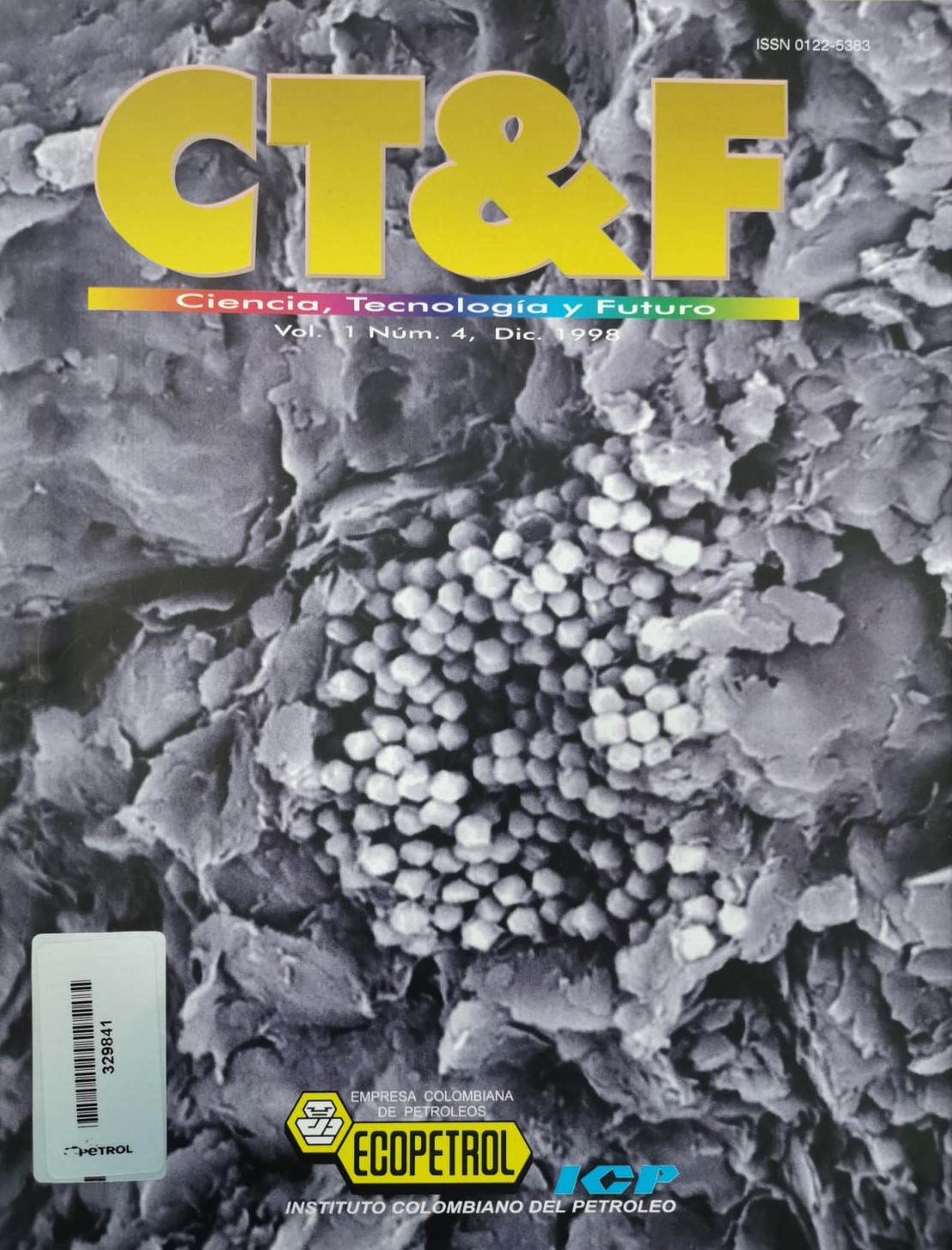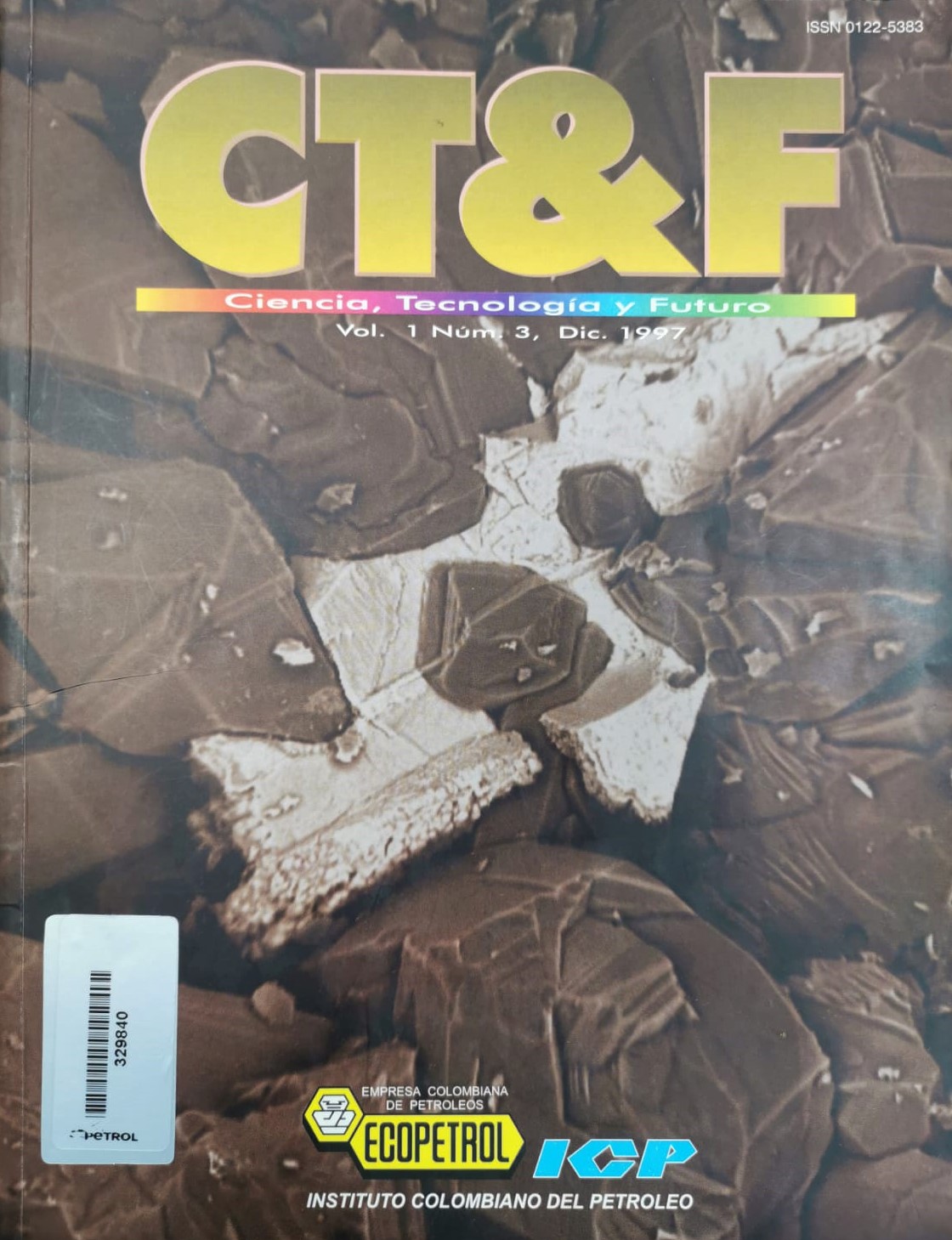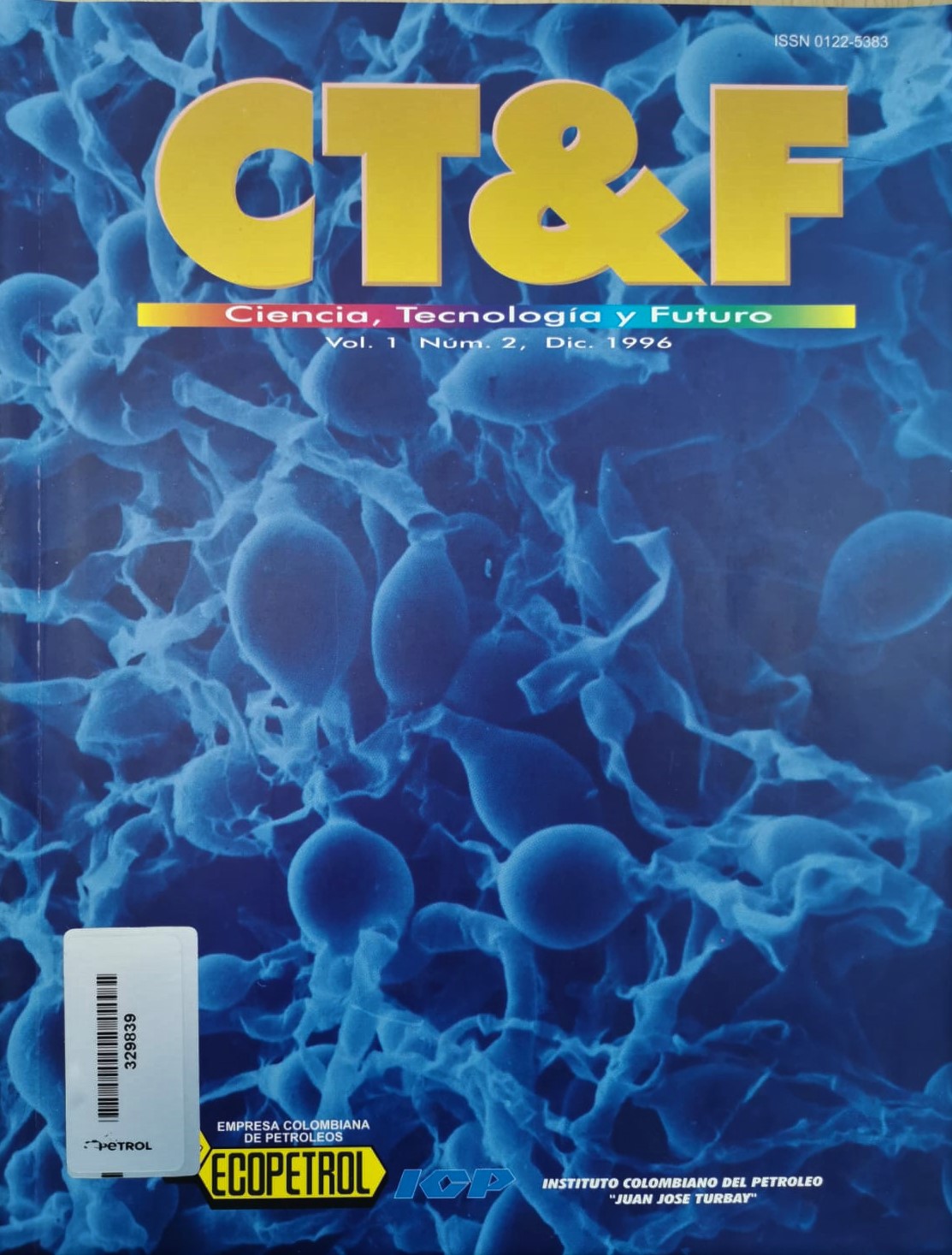Archives
-
 Vol. 14 No. 2 (2024)
Vol. 14 No. 2 (2024)
The Recent decisions taken by the government of the United States are changing dramatically the geopolitics of the energy sector. The cancellation of permits for Chevron to produce in Venezuela, the tariffs announced on crude oils produced by countries like Mexico and Canada, and the tariffs on imports from China may have significant impact on prices and trade flows of crude oil around the world, specifically in the case of heavy crude oils. This situation will catalyze the search for technologies to improve the efficiency of crude oil production and a rearrangement of crude oil markets may appear in the short term.
In this issue of CT&F (Vol. 14 No. 2), four papers are related to innovative technologies to improve enhance oil recovery by hybrid solvent-nanoparticles-cyclic steam injection, control of operations of hybrid foam – cyclic steam injection, avoid asphaltenes precipitation by nanoparticles injection in porous media, and use permeability modifiers to control water production.
One article is related to characterization of asphaltenes by the characterization of products of their mild oxidation. Other paper discusses the use of V-nets to manage alarms of green hydrogen plants, and another manuscript is related to the evaluation of complex mixtures containing bio-oil – n-butanol – 2-ethyl hexyl nitrate as diesel fuel.
Luis Javier Hoyos
CT&F editor
-
 Vol. 14 No. 1 (2024)
Vol. 14 No. 1 (2024)
In this issue of CT&F (edition 14, No 1), four papers are related to technologies of crude oil production, one is about mobility, and one is about steam reforming of methane.
As carbon capture and sequestration are important topics today, two articles from Ecopetrol and Sinopec discuss the interactions of CO2 with crude oil and water from modeling and experimental perspectives, respectively.
One article from Ecopetrol describes the modification developed to the chemical treatment in a heavy crude oil field where to use the only capillary injection system available the formulations of the anti-scaling and flow improver additives were changed to warranty compatibility and avoid emulsions in the electro submergible pumps.
In another paper, Ecopetrol presents the successful application of cyclic water injection combined with a smart selective completion system in the heavy crude oil T2 reservoir of the Chichimene field.
An analysis combining statistical analysis of data and process simulation of an industrial plant of natural gas steam reforming is presented, showing the plant has two operational modes and one of these modes improves hydrogen production. This result is relevant to decrease the amount of CO2 emissions produced in this plant, one of the biggest refinery emitters.
A paper from Turkey shows an analysis of the impact of adopting electric vehicles in a rental car fleet from sustainability, economic efficiency, and operational management perspectives, showing that despite electric vehicles being more expensive, maintenance cost and environmental benefits will offer a strategic advantage to car rental companies.
Luis Javier Hoyos
Editor CT&F
-
 Vol. 13 No. 2 (2023)
Vol. 13 No. 2 (2023)
The results of the COP 28 meeting in Dubai showed the progress toward the climate change Paris Agreement is slower than necessary and more costly than expected. Key actors in the energy sector strengthened the need to deploy policies encouraging the introduction of new business models and technologies. Even, several companies recognized their recent changes in strategy returning to give more emphasis to their business-as-usual activities due to roadblocks to develop new projects in renewable energies.
This situation enlightens the urgent need that exists for developing innovative technologies that allow humankind to assure a future for our sons, grandsons, and new generations.
In this edition 13 No 2 of journal CT&F there are five papers published. A paper from a collaboration between Spanish and Mexican authors is related to the impact of introducing and economizer in a single flash plant for a geothermal case. The results show a marginal increase in thermodynamic and exergy efficiency using the economizer.
The other four articles are related to mobility in articles from India and Turkey. Three articles study the mixtures diesel – LPG – gasoline, blends of diesel fuel-linseed oil and biodiesel-ethanol, and the effect of cerium oxide nanoparticles on diesel fuel, measuring thermal and exergy efficiencies, fuel consumption, and emissions.
A fifth article studies the use of an artificial fish swarm speed-optimized fuzzy controller based on a deep neural learning classifier for energy management Systems in a Hybrid Electric Vehicle. Their results show that this controller decreases energy consumption and presents a better performance compared with other types of controllers.
Luis Javier Hoyos
Editor CT&F
-
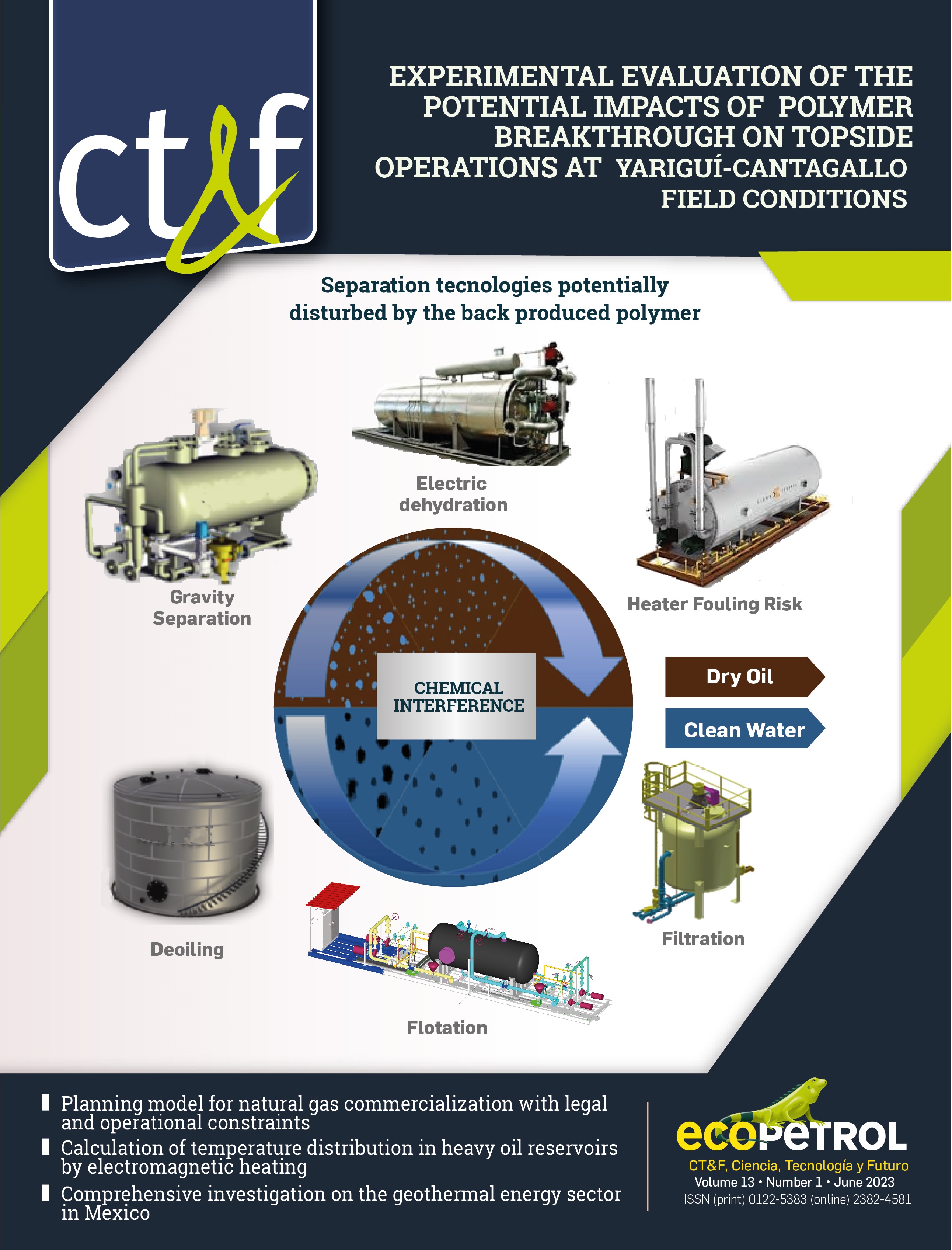 Vol. 13 No. 1 (2023)
Vol. 13 No. 1 (2023)
In this new edition of CT&F we want to thank all the people who make our journal a reality, authors, peer reviewers, editorial group, and journal committee. I wish you a merry Christmas and a Happy New Year for all of you and your cherished beings.
In this edition, there are two papers related to the oil and gas industry about the effect of EOR additives used in EOR on surface operations and the simulation of Temperature Distribution In Heavy Oil Reservoirs by electromagnetic heating.
One article analyses the technical-economic feasibility of using fuel-cell hybrid electric buses in Istanbul, showing the benefits of this technology versus other ones.
Another article evaluates the situation and perspectives of geothermal energy in Mexico where there are five plants in operation today and a great potential exists to be developed.
In another work, the authors present an operations research model to optimize the supply chain of the gas business of Ecopetrol considering the priorities mandated by the Colombian government.
Finally, two papers are related to applied research concerning materials. One is about the analysis of erosion in turbine blades caused by solid particles, and another is about the fatigue characteristics of key welds of module rig derricks.
Luis Javier Hoyos
CT&F Editor
-
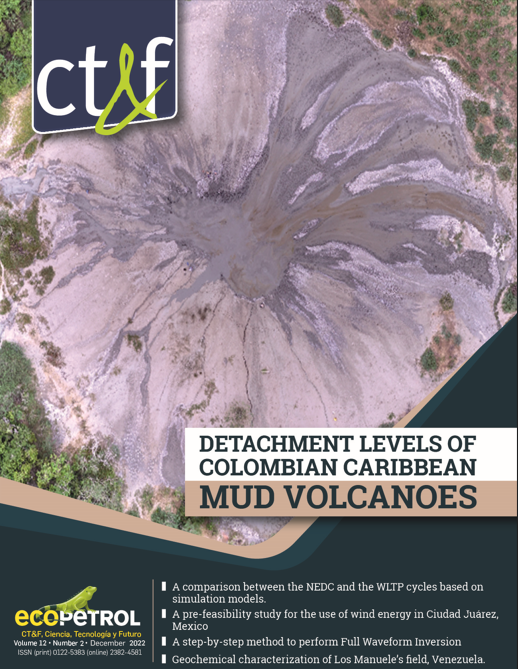 Vol. 12 No. 2 (2022)
Vol. 12 No. 2 (2022)
In this second edition, volume 12 of CT&F, five articles were published. An article from the offshore group of Exploration of Ecopetrol studies the geological characterization of mud volcanoes located in the Caribbean area of Colombia and relates it to the sedimentary evolution of this area of interest to explore natural gas. In another paper, whose authors are from Universidad Central de Venezuela, several crude oils from the Maracaibo basin are characterized, identifying two types of source rocks: marine shale and terrigenous.
A third article proposes a methodology for full-waveform inversion processing based on a synthetic data set, showing how each step of processing affects the results.
From the Autonomous University of Ciudad Juarez, Mexico, and the University of La Rioja, Spain, an article develops a feasibility analysis of using wind energy in Ciudad Juarez, concluding that it is not feasible to install wind turbines in this city.
Finally, an article from the Bursa Udulag compares the performance of two types of cycles; the New European Driving Cycle and the Worldwide Harmonised Light Vehicles Test Procedure, comparing emissions, fuel consumption and power efficiency.
Luis Javier Hoyos
Editorial CT&F
-
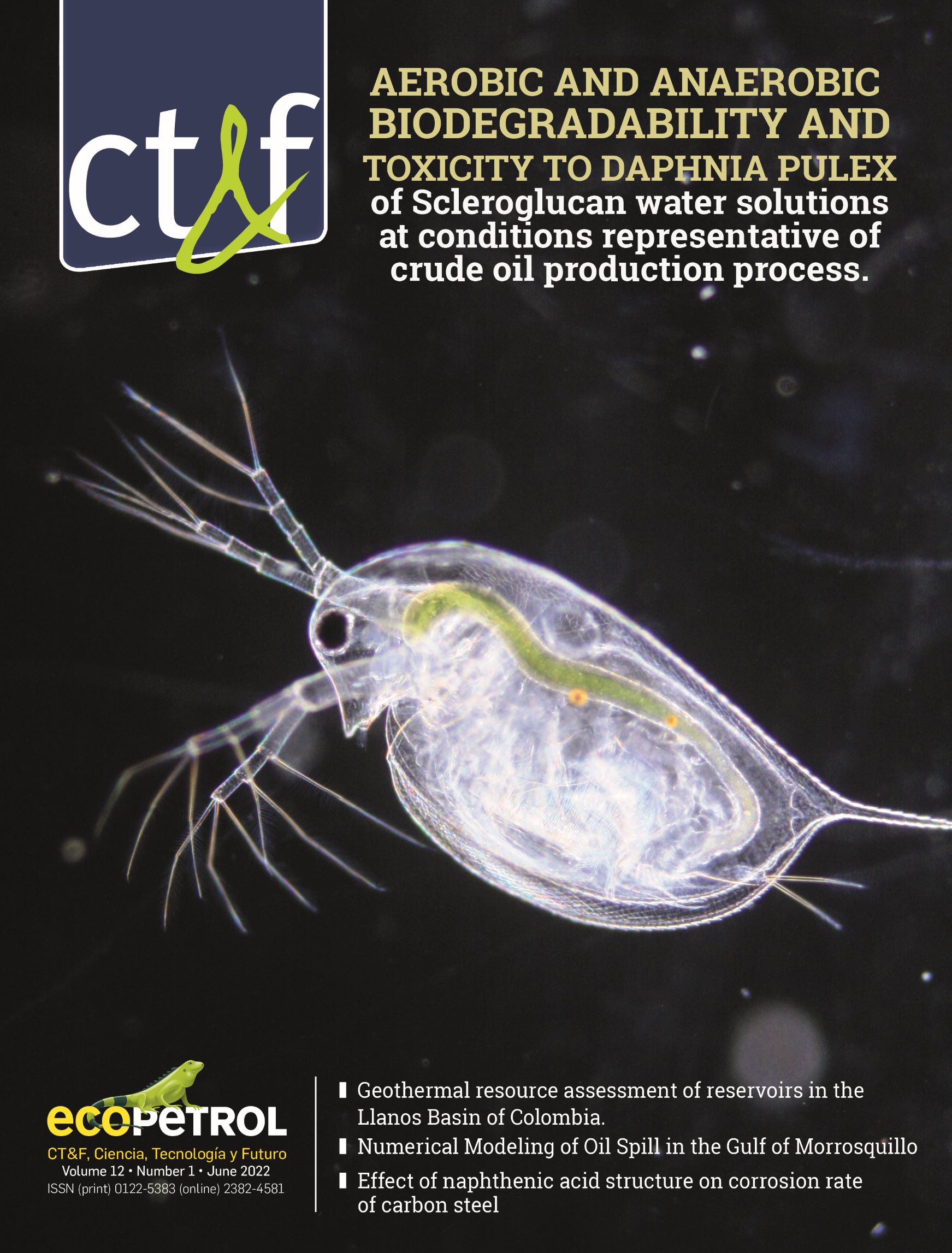 Vol. 12 No. 1 (2022)
Vol. 12 No. 1 (2022)
Continuing with our emphasis on highlight research, development and innovation works related to the energy transition and decarbonization, in this new edition of CT&F we are publishing two articles related to renewable energies: one on the evaluation of geothermal potential in the Llanos basin of Colombia and another on the evaluation of the potential use of small wind turbines for electricity production in the region of La Guajira.
Two articles contain environmental topics such as the evaluation of the biodegradability and toxicity to water fleas of the use of scleroglucan as an additive to improve water flooding of crude oil reservoirs and the use of climatological mathematical models to simulate oil spills in environments, using as a case a previous oil spill that occurred in the Gulf of Morrosquillo.
An article is directly related to decarbonization and it develops a model of the phenomena that occur during the homogeneous combustion of the gases produced when an oil reservoir is subjected to in situ combustion methods.
Finally, two articles are related to the oil industry; one to the effect of the structure and molecular weight of naphthenic acids extracted from a crude oil on corrosion rate of carbon steel and another on the effect of antenna type on full-wave inversion methods.
Luis Javier Hoyos
Editor CT&F
-
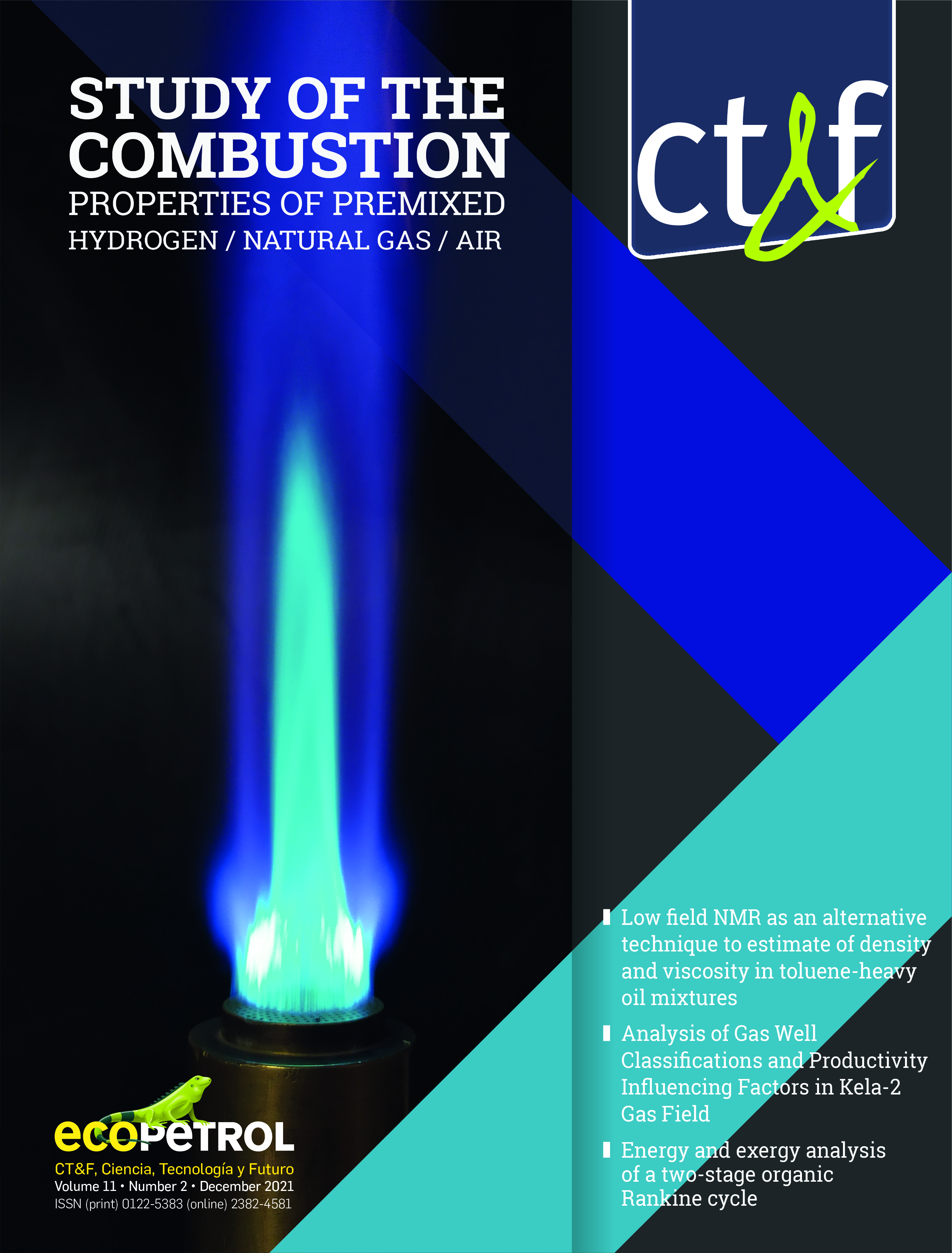 Study of the combustion properties of premixed Hydrogen / Natural Gas / Air
Vol. 11 No. 2 (2021)
Study of the combustion properties of premixed Hydrogen / Natural Gas / Air
Vol. 11 No. 2 (2021)In 2021, there was a significant recovery of global demand for liquid fuels due to the economic recovery programs that many countries implemented to mitigate the fall of their economies. The massive vaccination programs, and the resulting decrease in mortality from Covid-19 made society more confident to advance in this recovery.
Globally, since late January 2022, there has been a significant decrease in cases of contagion and deaths caused by Covid-19, although there is a resurgence of cases, so far marginal, in some regions of Asia. Hence, it seems that Covid-19 is becoming an issue of the past.
Now, a new cause of uncertainty in the world energy market has arisen, that is, the war in Ukraine. The severity of sanctions against Russia and their compliance, Western Europe's support to Ukraine, Russia's response to such support, the duration of the war, and even the possible use of nuclear weapons, will be key for defining the outcome of this new event.
The foregoing, although important and painful, should not let us lose sight of the challenge for humanity to reduce greenhouse gas emissions into the atmosphere to limit global warming. Further development of technologies and innovation are necessary in response to this challenge. Green and blue hydrogen, CO2 capture and sequestration, renewable energies, and biofuels are essential technologies to advance in the energy transition.
In this issue of CT&F, we publish several articles of interest related to this transition challenge. The use of natural gas-hydrogen mixtures as fuel in combustion systems is, without any doubt, a way to reduce emissions from chemical plants and oil refineries. The use of double-stage Ranking cycles to recover heat from geothermal systems may be relevant to make the most of the heat from the earth's crust. The modification of conventional tools to simulate processes with oxygen-containing molecules is essential for the synthesis and analysis of new processes in the fuel and petrochemical industry. Natural gas will be a key fuel in the energy transition, and efficient development of these assets will become increasingly important.
Luis Javier Hoyos
-
 Volumen 11 No. 1 - 2021
Vol. 11 No. 1 (2021)
Volumen 11 No. 1 - 2021
Vol. 11 No. 1 (2021)The Covid-19 pandemic is still setting the pulse of humanity. Although great progress has been achieved in its treatment, developed countries have managed to vaccinate large portions of their population and many developing countries are struggling to significantly increase their vaccination rates; more contagious variants of the virus are emerging that have forced governments to propose new strategies such as booster doses, health passports, and more rigorous control on their borders.
Such situations are being reflected on the energy markets that are showing significant demand recoveries, although some uncertainty is perceived due to the possible need to impose new mobility restrictions.
This 2021 summer has been the warmest of the last century and a half, which is one more evidence of climate change effects. Droughts, forest fires, and record temperatures in several regions of the United States and Canada, floods and landslides never experienced in Germany, and extreme heat waves in various regions of Europe were recent news. The UN's group of experts on climate change has just published its sixth report in which it insists on the imminent need to reduce greenhouse gas emissions if we do not want to have points of no return regarding the planet's climate.
This environment suggests that the energy sector will undergo significant changes in the future. A significant growth in electric power demand and the development of renewable technologies will be the lead agents of energy transition.
In the same vein, our scientific journal CT&F has been expanding its spectrum of action from oil and gas themes to issues related to biofuels and renewable energies, so that we can promote communication and scientific and technological development that is so much needed in these times of energy transition. The exchange of ideas can lead us to new ways of addressing the enormous challenges that we are facing as a society.
This issue includes several articles on power generation from renewable sources and its social acceptance, evaluation of performance over time of photovoltaic cells, production of reducible sugar from residual biomass, as well as the evaluation of biodegradable polymers to increase the recovery factor of crude oil fields, and the use of ultraviolet light to control bacteria that produce biocorrosion in injection wells.
It also includes several articles on seismic processing techniques, an assessment of how innovation leveraged on international peers has enabled several countries to develop their unconventional sources, and the use of computational fluid dynamics in the simulation of a down – flow reactor.
-
 Special issue on EOR
Vol. 10 No. 2 (2020)
Special issue on EOR
Vol. 10 No. 2 (2020)CT&F Journal dedicates this special issue, including relevant Colombian and international (Argentina, Canada, Norway, and the U.S) studies describing different EOR technologies and methods addressing topics of interest for the oil and gas community. This special edition includes ongoing research in SmartWater technology and a practical methodology for interwell water tracer programs. This volume also contains a numerical simulation study of CO2-EOR based on produced CO2 enriched using Oxycombustion providing an overview of the integrated vision of EOR and the reduction of carbon footprint. In this issue, Thermal EOR methods include downhole heating technologies (DHHT) and a numerical simulation study evaluating different strategies combining DHHT and hybrid cyclic steam methods considering its evaluation based on oil recovery, energy efficiency, and environmental indexes. Finally, research studies on Chemical EOR (cEOR) are included in this volume focused on advanced chemicals tolerant to high temperature (i.e., AMPS) and mechanical degradation (i.e., biopolymer and polymeric surfactants). A comprehensive review of the use of nanoparticles to improve the thermal resistance of synthetic polymers was also included as an alternative approach to enhance the performance of EOR polymers. Studies related to the mechanical degradation of polymers are complemented with papers describing experimental and CFD simulation methodologies contributing to the design of cEOR in Colombia.
Both CT&F and Ecopetrol hope to continue promoting and contributing to developing a network of professionals and knowledge dissemination integrating EOR and energy transition areas in years to come.
-
 Accepted Manuscripts
Accepted Manuscripts
“Accepted Manuscripts” have been peer-reviewed and accepted for publication. They are posted online prior to technical editing, formatting for publication and author proofing. The copyright holder for this preprint is CT&F journal under a CC-BY-ND Creative Commons License. CT&F journal provides “Accepted Manuscripts” as a service to the research community to expedite the dissemination of scientific material as soon as possible after acceptance. “Accepted Manuscripts” appear in full in PDF format. “Accepted Manuscripts” have been fully peer-reviewed, but should not be considered the official version of record. They are citable by the Digital Object Identifier (DOI). Please Note that technical editing may introduce minor changes
-
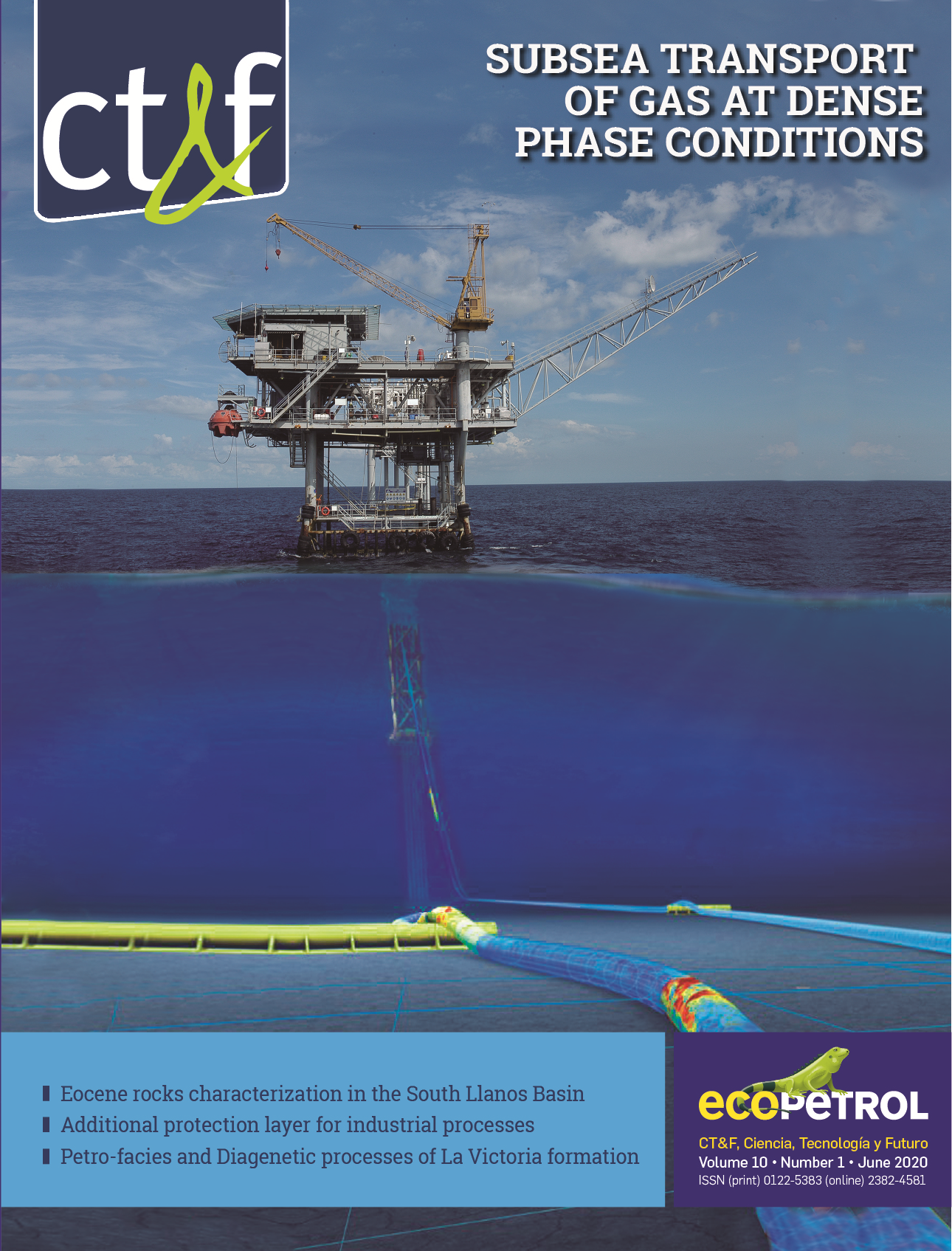 Vol. 10 No. 1 (2020)
Vol. 10 No. 1 (2020)
In line with these priorities of the industry, this issue of CT&F (Volume 10, Number 1, 2020) includes three articles related to geology in southern Colombia whose authors belong to various Colombian universities and to Ecopetrol, one article on a method to improve seismic inversion, one that proposes using gas transportation at high density conditions for recent offshore discoveries in Colombia, and three articles focused on energy management in real-time, the use of an additional protection layer in industrial plants called super-alarms, and the design of photo-reactors based on fluid computational dynamics
-
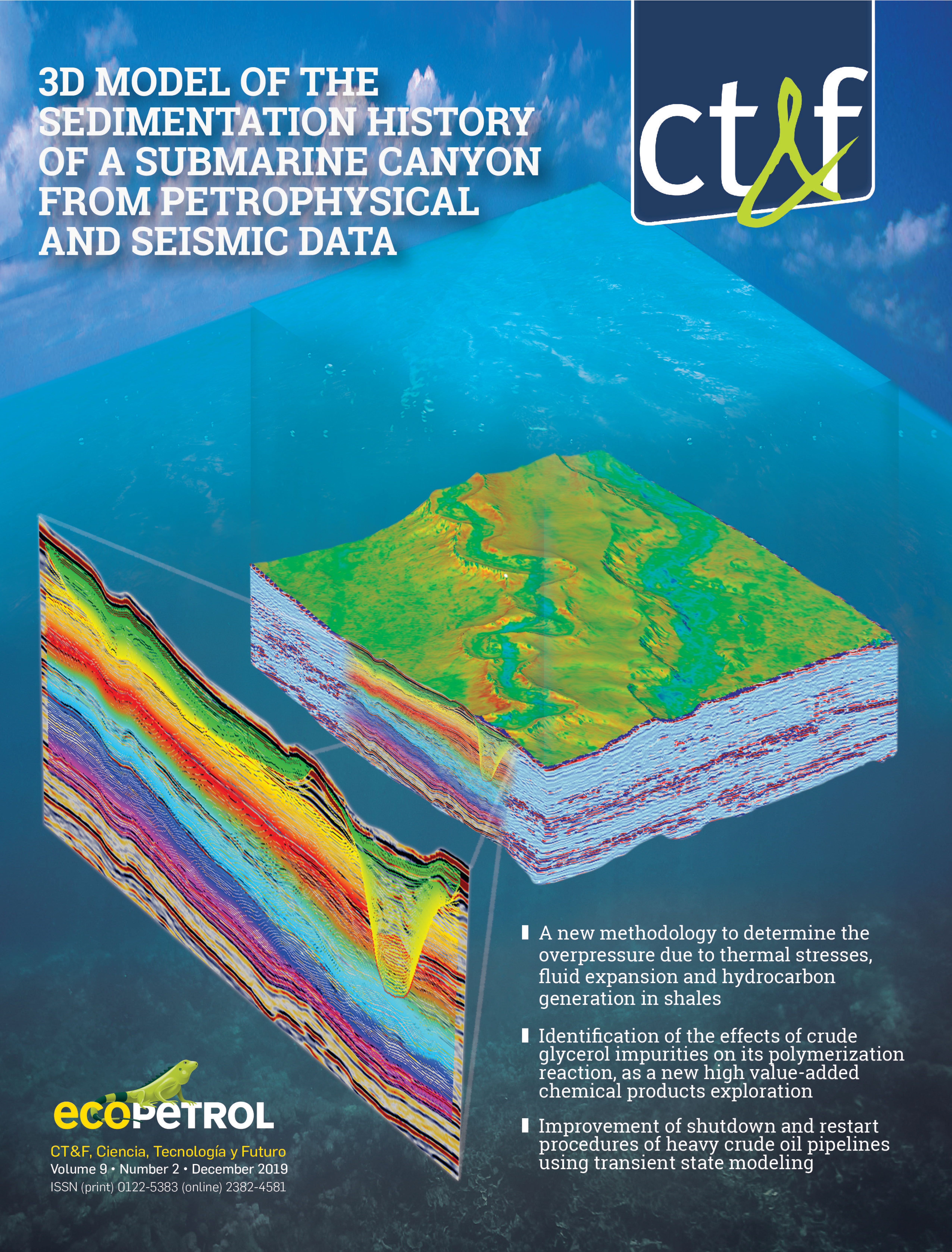 Vol. 9 No. 2 (2019)
Vol. 9 No. 2 (2019)
This issue includes five research articles focused on the operating segments of O&G industry (Exploration, Production, Transport and Refining), one article on environmental technology and another three articles regarding renewable energies and Biofuels.
This issue hosts the paper “Submarine Canyon-Fill Reconstruction from integrated Seismic-Stratigraphic Analysis – Application to Banquereau Formation, Scotian Basin – Offshore Canada” by Chajin et al. This paper is relevant for the economic importance of ancient deep water deposits.
The paper of Chajin et al. contributes with a 3D stratigraphic model that might be used as an analog for similar reservoirs in the Scotian Basin and other reservoirs for similar tectonic settings, providing key insights and vital information for decision making in deep water reservoirs.
-
 Vol. 9 No. 1 (2019)
Vol. 9 No. 1 (2019)
On this issue we are publishing four with themes of Reverse Time Migration, modeling of seismic waves into an elastic media, reservoir characterization based on geochemical and well logs data and finally an article of diagenesis of tight sandstone. Special focus in the present issue on environmental aspects is done. So, four papers related with soil remediation, with photocatalytic degradation of hydrocarbons, with oils spills in rivers and a remarkable study about on-road vehicle emission factors in Colombia conforms a block that aim to contribute to get a better understanding about the environmental burdens in the industry.
Respecting to Oil Production segment, this issue includes a methodology for calculating performance indexes for Enhanced Oil recovery by air injection, a combined artificial intelligence modeling for forecasting and also an assessment of surfactant-polymer formulation for EOR. About integrity and materials topics, an evaluation of high density polyethylene as an alternative for corrosion control in pipes is also included.
-
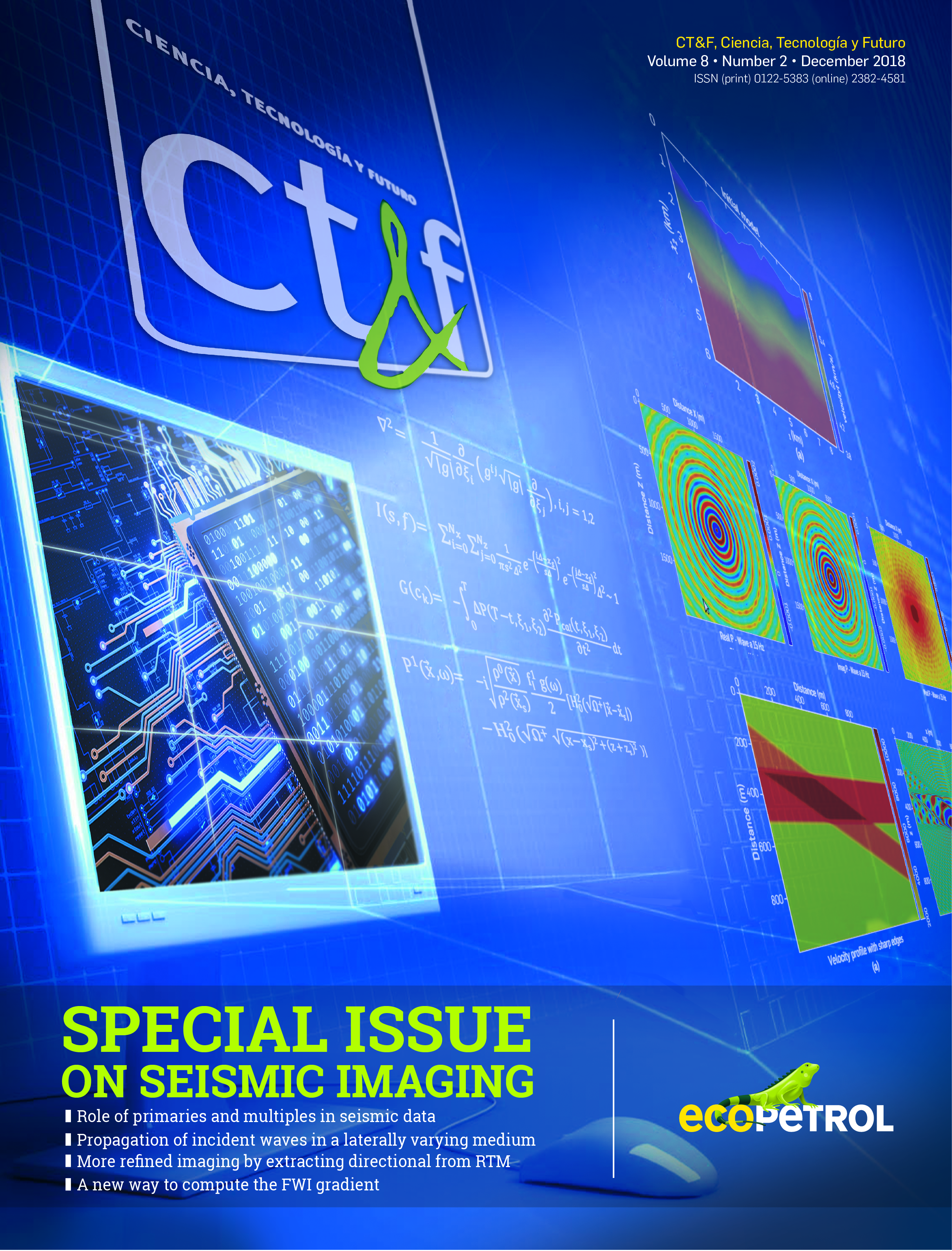 Special Issue on Seismic Imaging
Vol. 8 No. 2 (2018)
Special Issue on Seismic Imaging
Vol. 8 No. 2 (2018)Special Issue on Seismic Imaging: In this special issue the following subjects are covered: blended sources; a new technology that offers cost-effective optimizations in seismic acquisition, seismic denoise and interpolation based in sparse inversion, new advances in seismic modeling to obtain more realistic representation of complex wave propagation, new ideas on imaging that may improve the quality of seismic data, and studies on Full Waveform Inversion (FWI) optimization intended to maximize the resolution of the velocity field, which is undoubtedly the future of this field of applied science. In this issue are considered topics such:
* Role of primaries in seismic data
* Propagation of incident waves in a laterally varying medium
* More refined imaging by extracting directional from RTM
* A new way to compute the FWI gradient
-
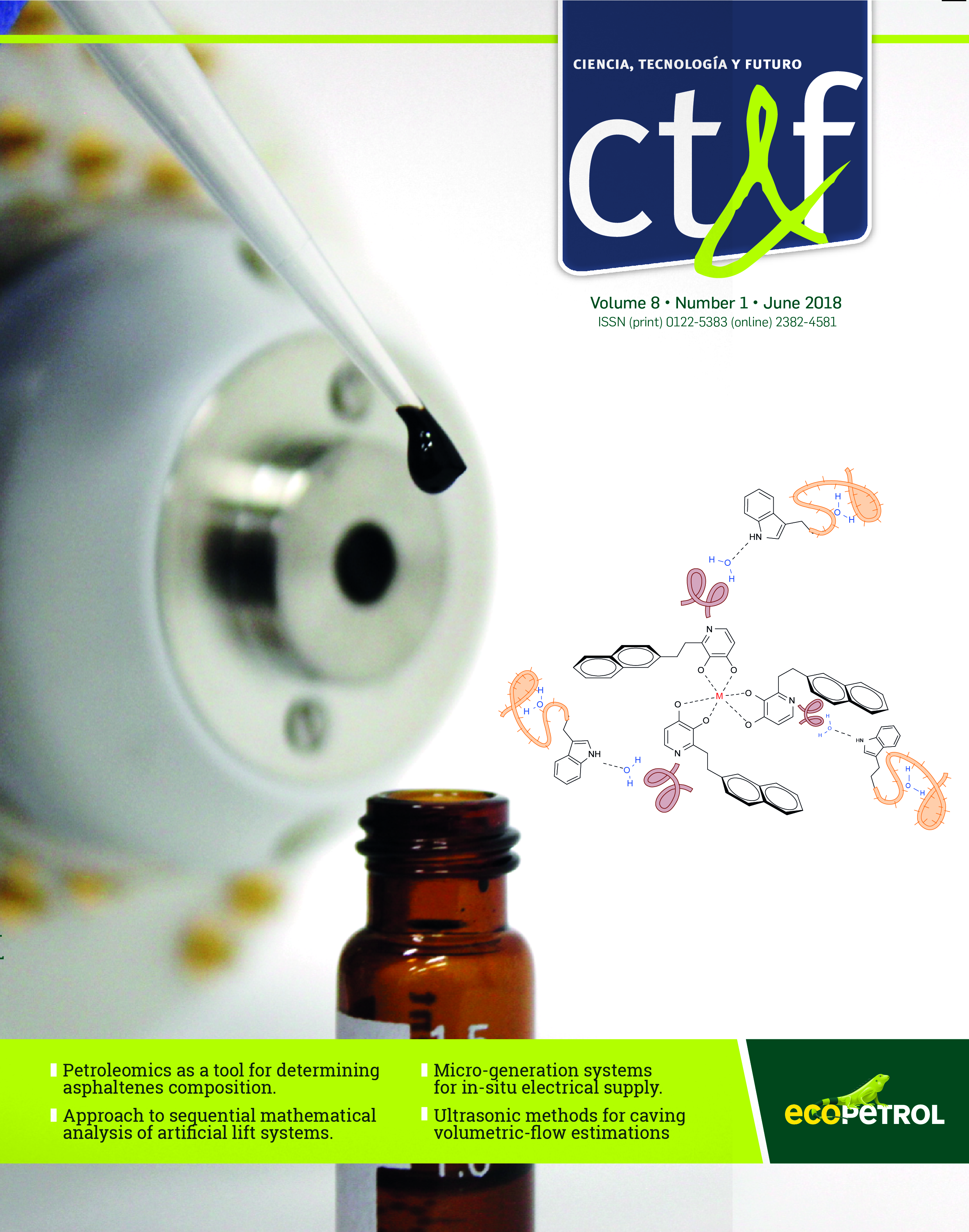 Vol. 8 No. 1 (2018)
Vol. 8 No. 1 (2018)
This issue includes eight research articles focused on the operating segments of O&G industry (Exploration, Production, Refining and Transportation), one article on environmental technology and another three articles regarding renewable energies and Biofuels. In this issue are considered topics such:
* Petroleomics as a tool for detrmining asphaltenes composition
* Approach to sequential mathematical analysis of artificial lift systems
* Micro-generation systes for in-situ electrical supply
* Ultrasonic methods for caving volumetric flow estimations
-
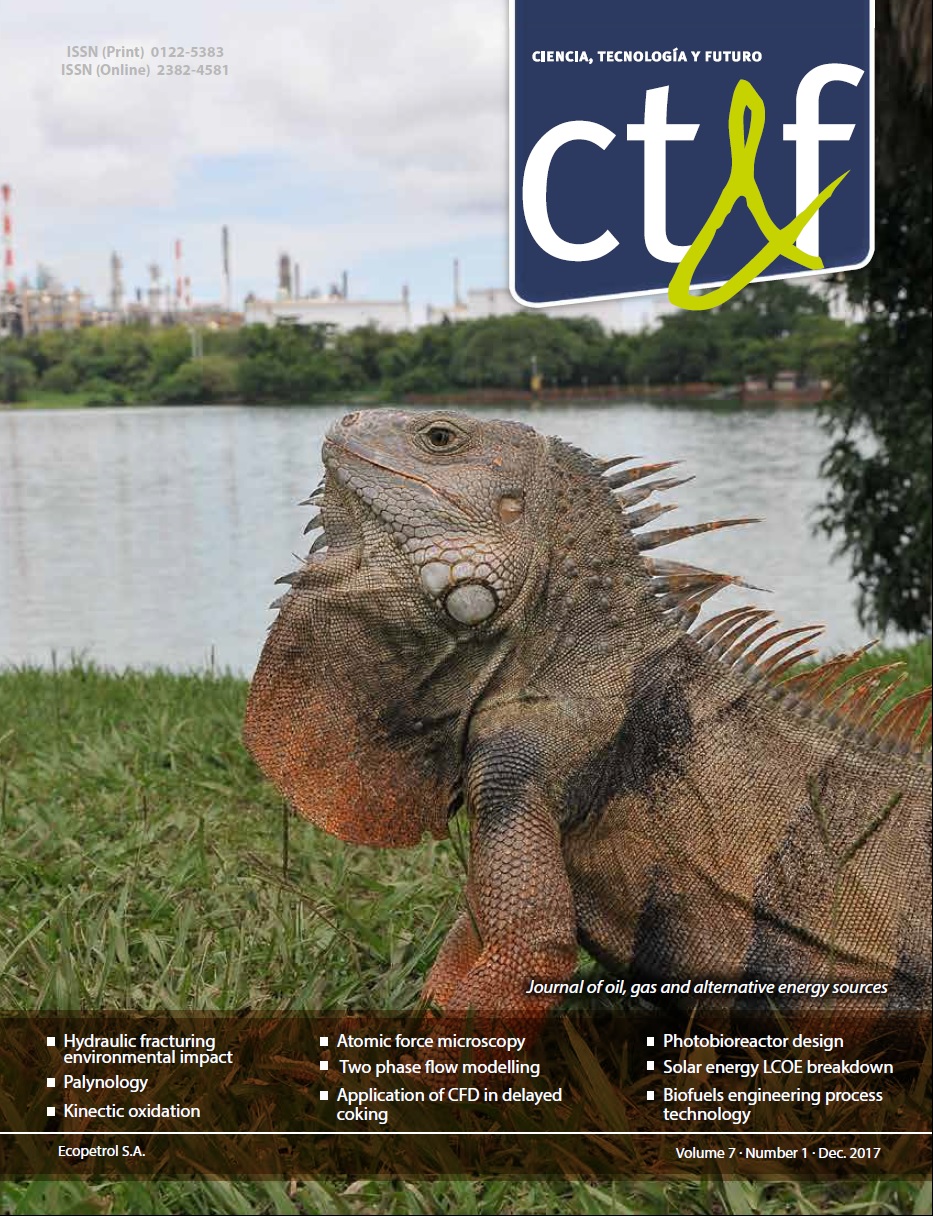 Vol. 7 No. 1 (2017)
Vol. 7 No. 1 (2017)
This issue includes six research articles focused on the operating segments of O&G industry (Exploration, Production, Refining and Transportation), one article on environmental technology and another two articles regarding renewable energies and Biofuels. In this issue are considered topics such:
* Hydraulic fracturing environmental impact
* Kinetic oxidation of heavy crude
* Palynologic study
* Application of CFD in delayed coking
-
 Vol. 6 No. 5 (2017)
Vol. 6 No. 5 (2017)
This issue includes three research articles focused on the operating segments of O&G industry (Exploration, and Production) and three articles regarding Biofuels. In this issue are considered topics such:
* A review article in polymer flooding (EOR)
* Aggregate structure analysis of Colombian heavy crude asphaltenes using Small Angle X-ray Scattering (SAXS)
* Study of effect of filtration with bleaching earths on several quality parameters form Plam Oil Methyl Ester (POME)
* Application of spectral inversion and fuzzy logic interpolation in post-stack resolution enhancement on a seismic volume of the Colombian llanos basin
-
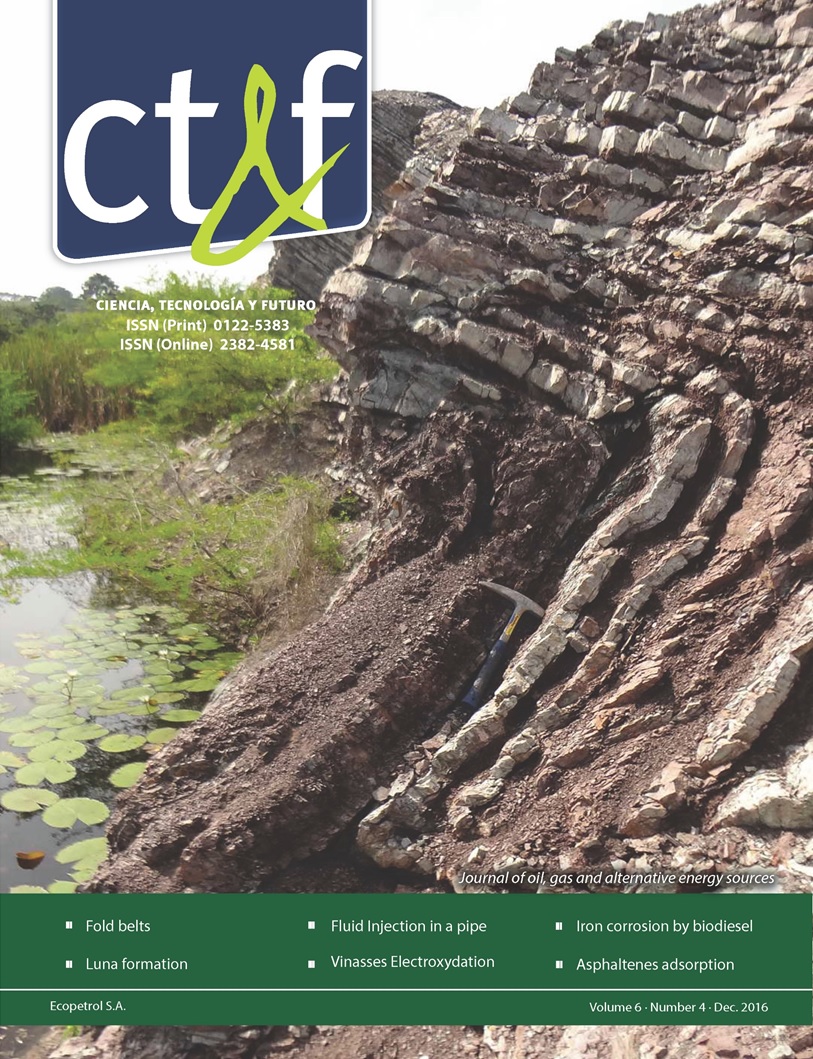 Vol. 6 No. 4 (2016)
Vol. 6 No. 4 (2016)
It includes articles in the areas of exploration, production, transport, and biofuels. The articles present the lithofacies analysis and depositional environment of the Galembo member of La Luna formation; the adsorption-desorption of n-C7 asphaltenes over micro and nanoparticles of silica and its impact on wettability alteration; the rigorous analytical solution of the basic concentration model for an injected fluid pipe; the anodic oxidation of pretreated vinasse using Boron doped diamond electrodes and the effect of corrosiveness of Biodiesel obtained from different raw materials on gray cast iron.
The papers authors are Ecopetrol´s researchers and people from supporting companies such as UT Pexlab, TIP Ltda as well as experts from several universities like Universidad Industrial de Santander, Universidad Nacional de Colombia - Medellín and internationals University of London, Washington State University, Calgary University, Universidad Autónoma de México, Universidad de la Habana y la Universidad Central de Venezuela.


